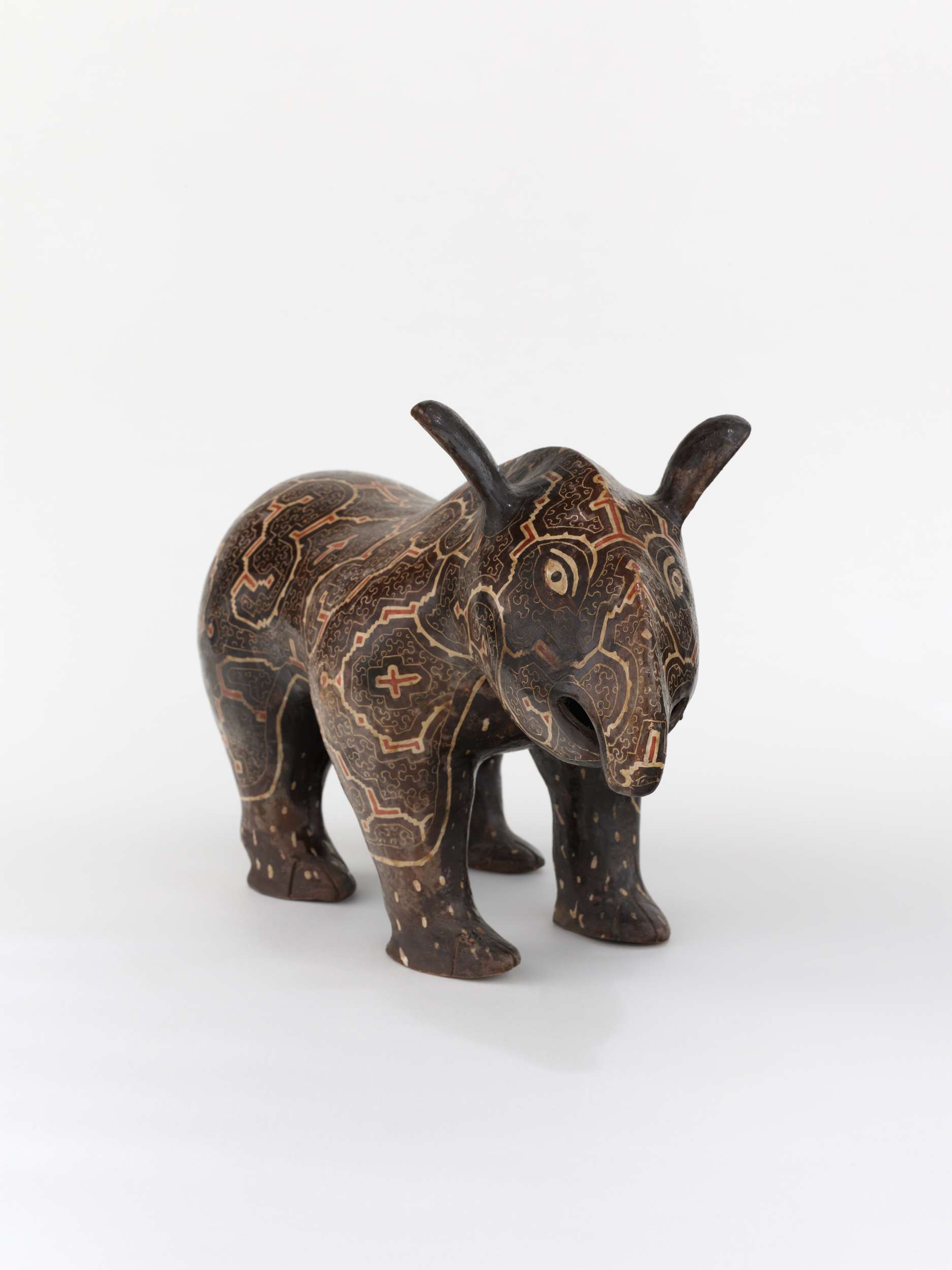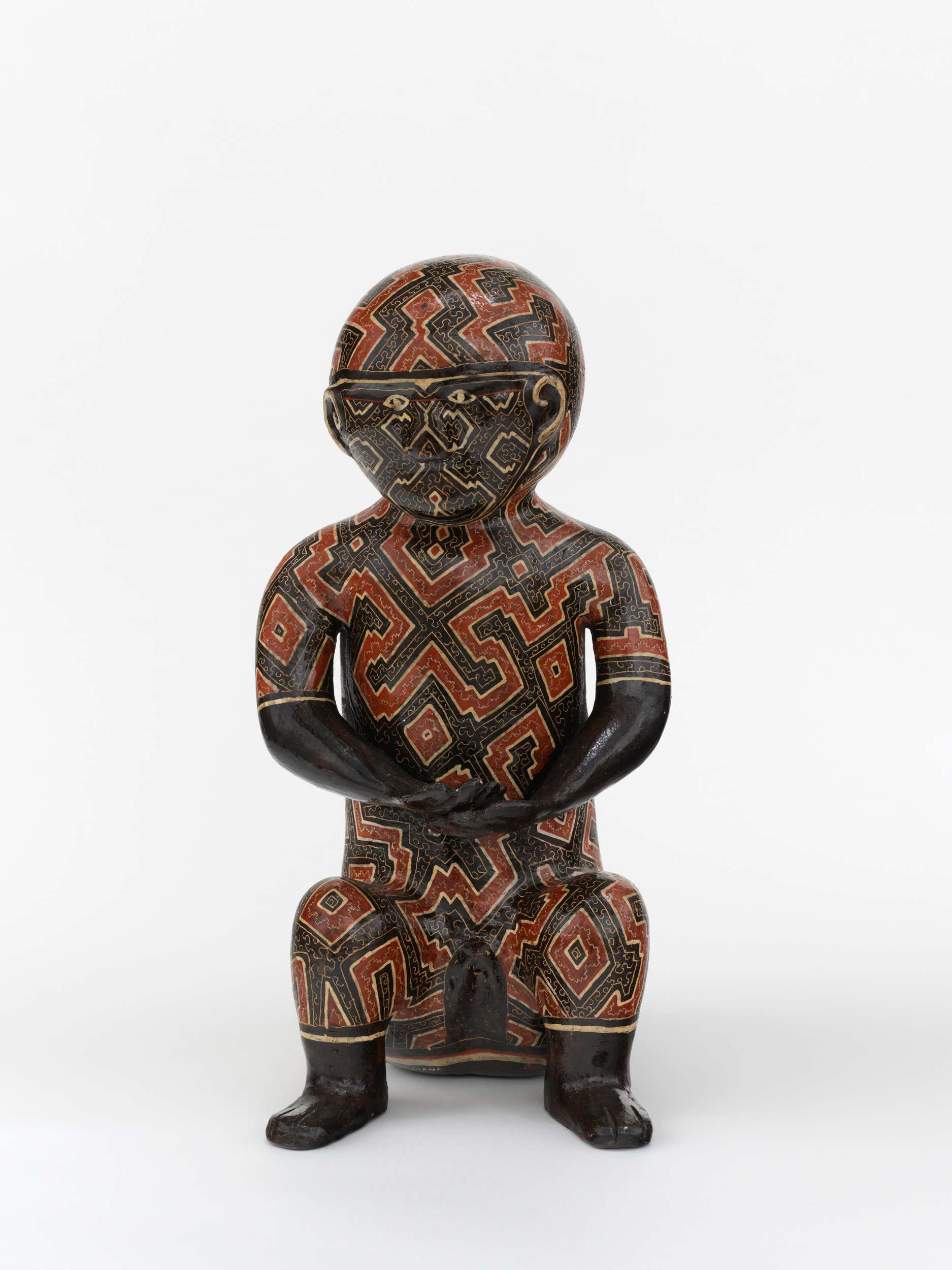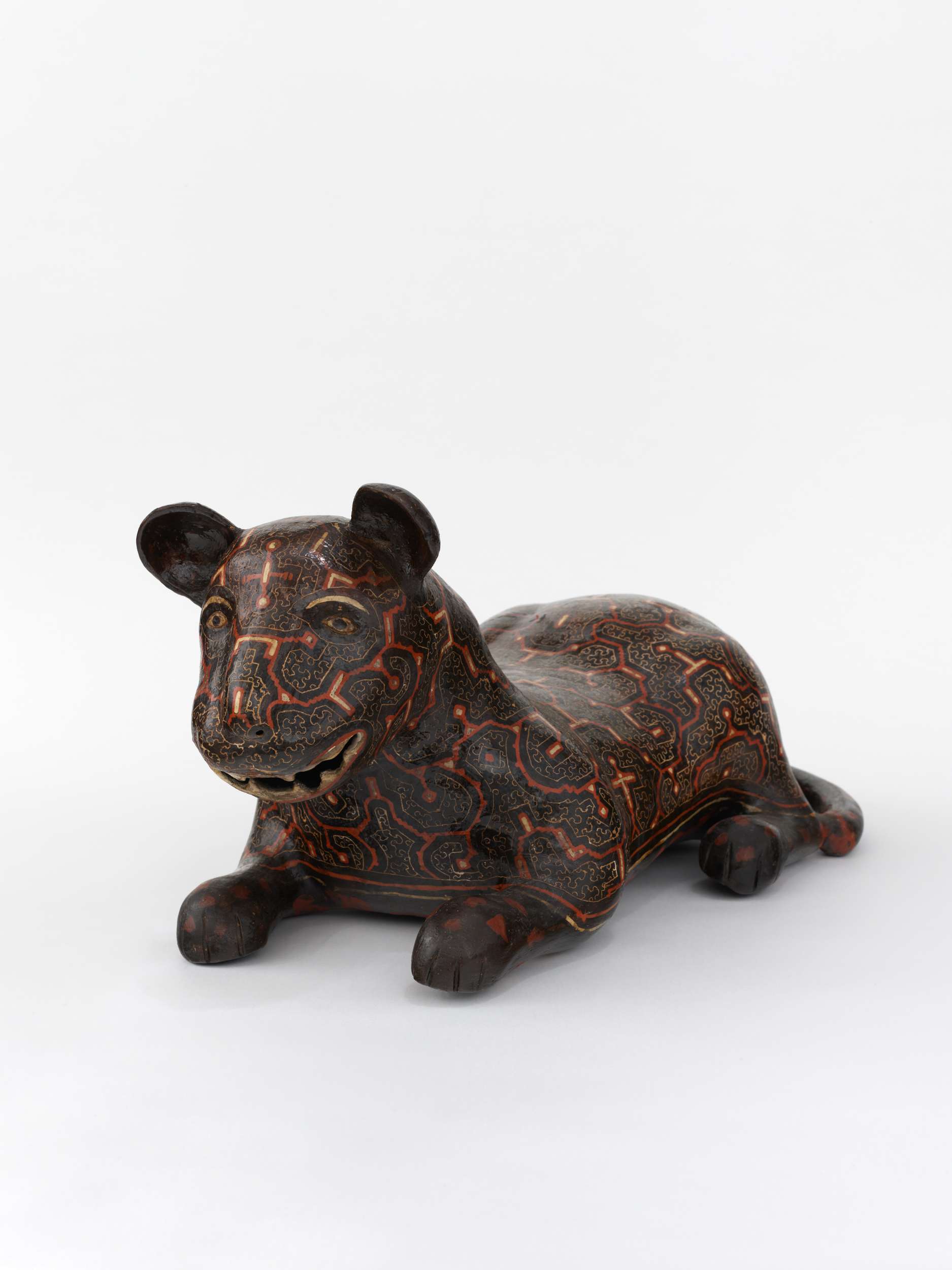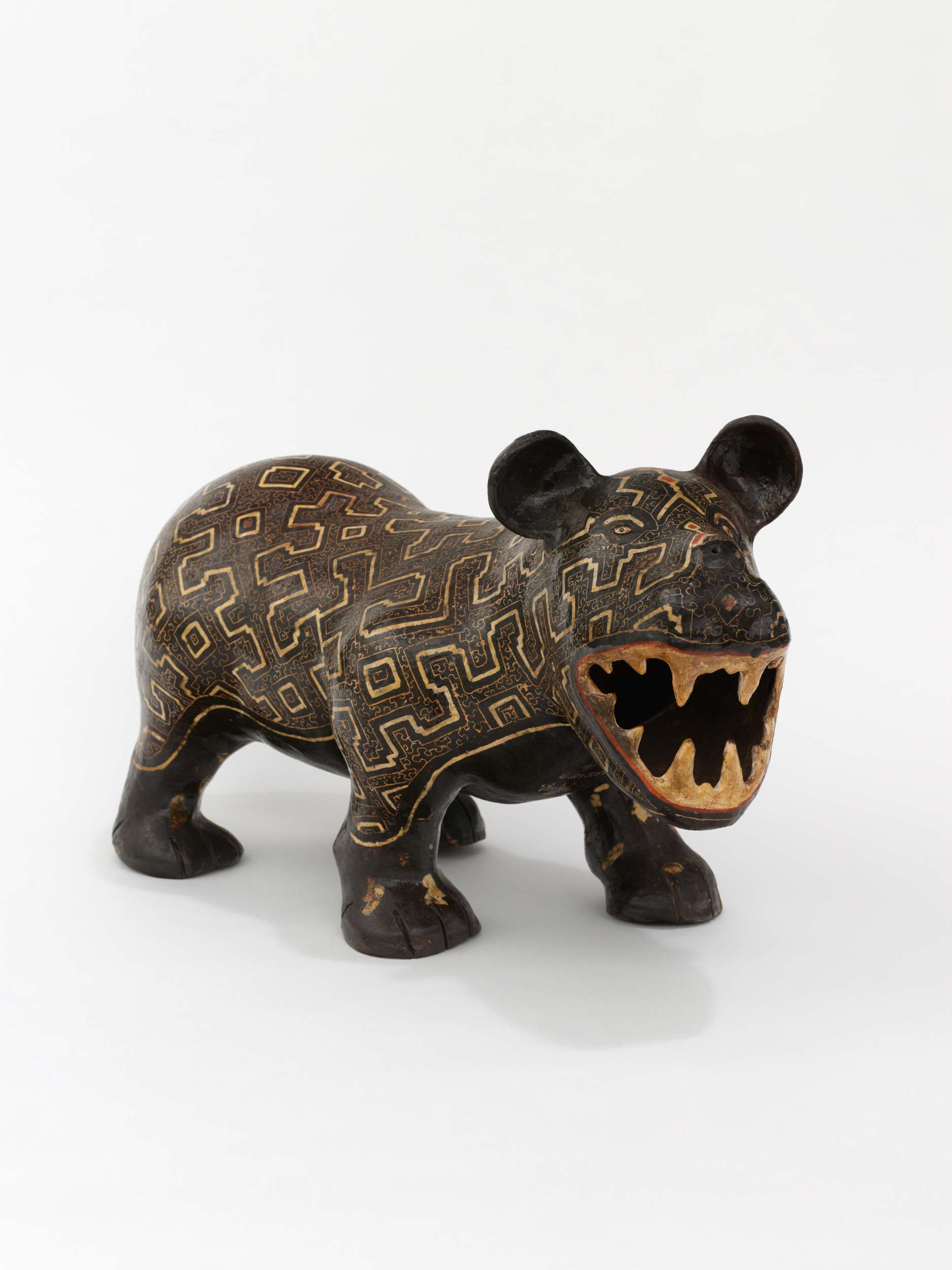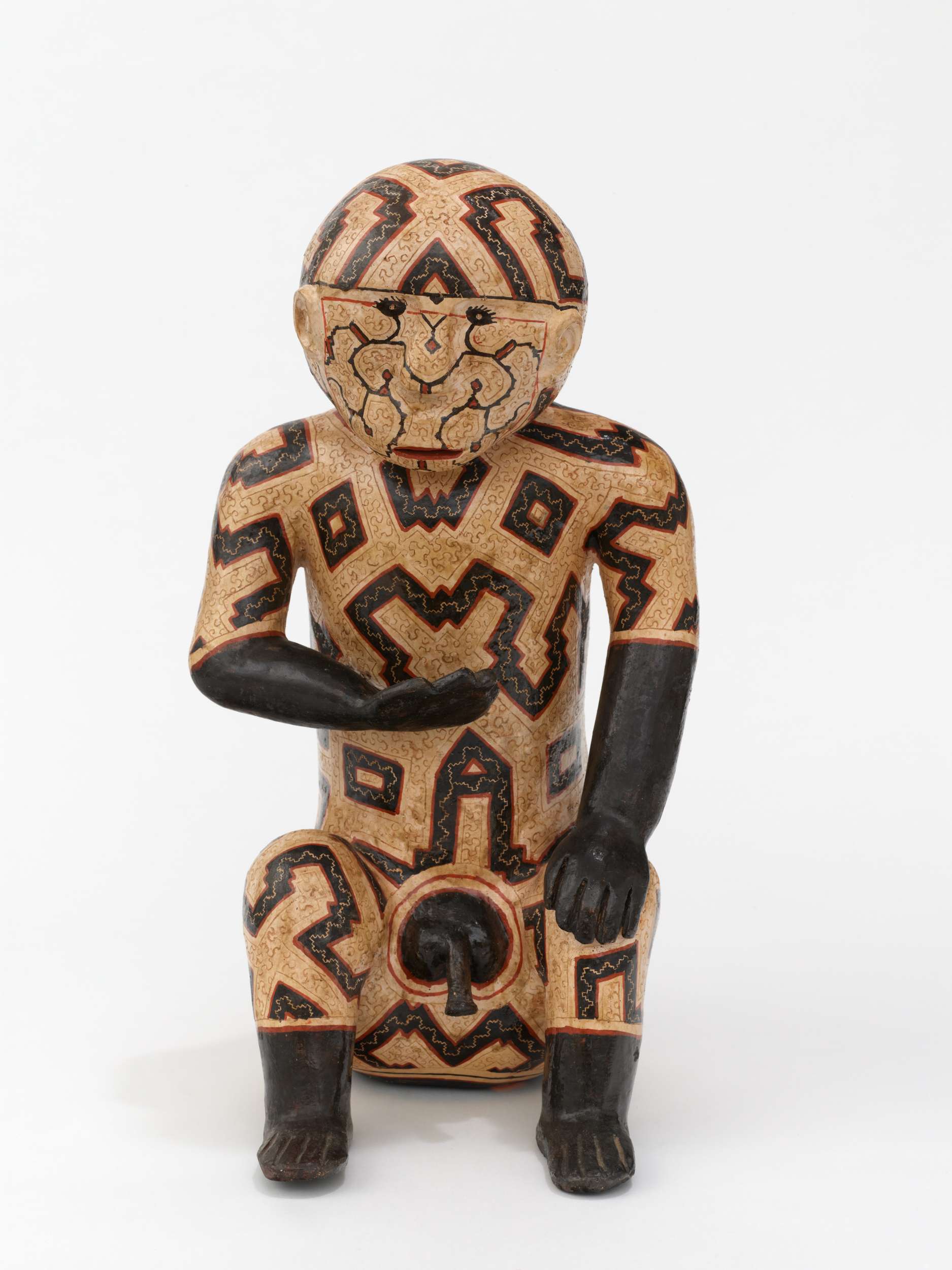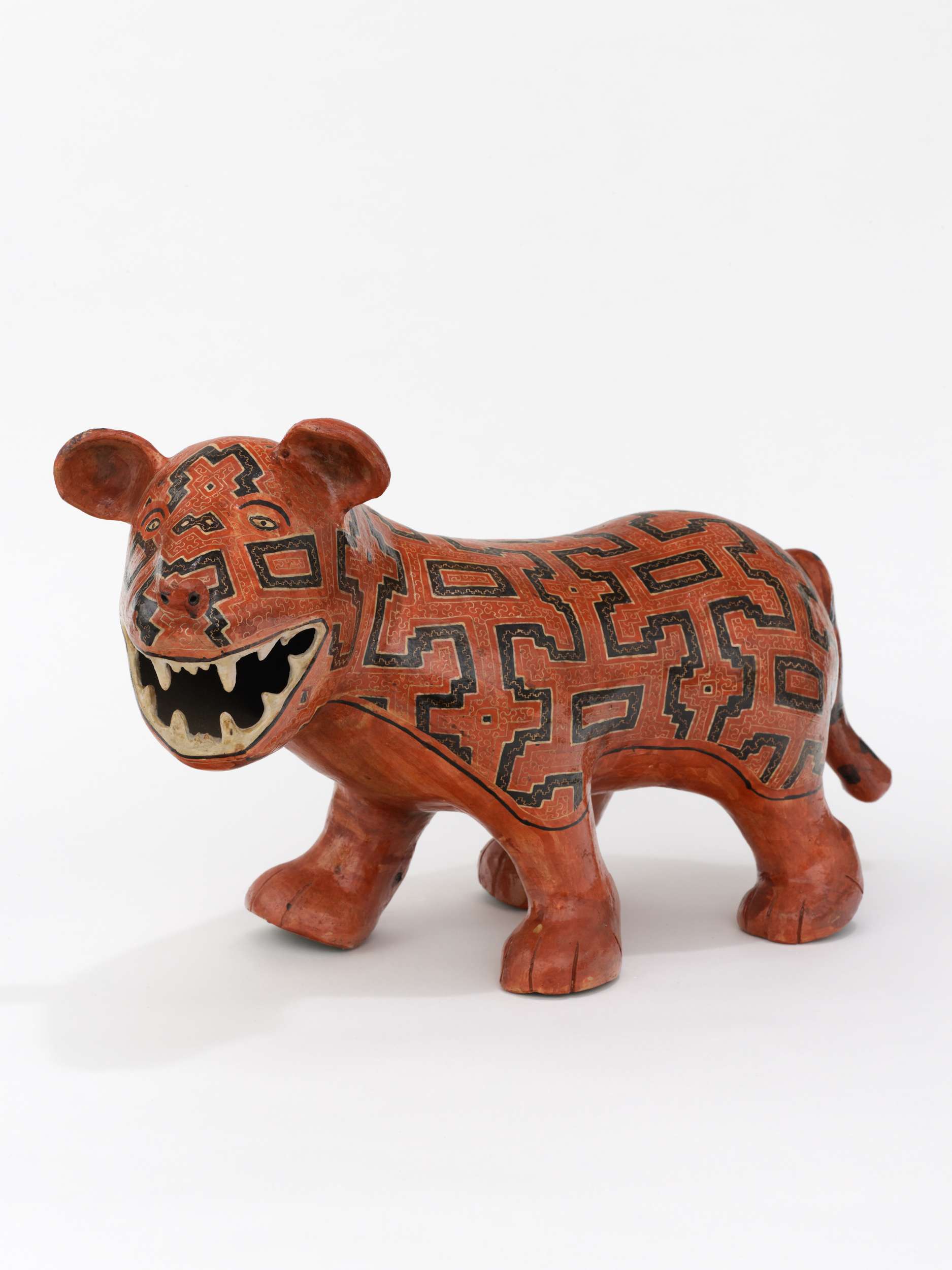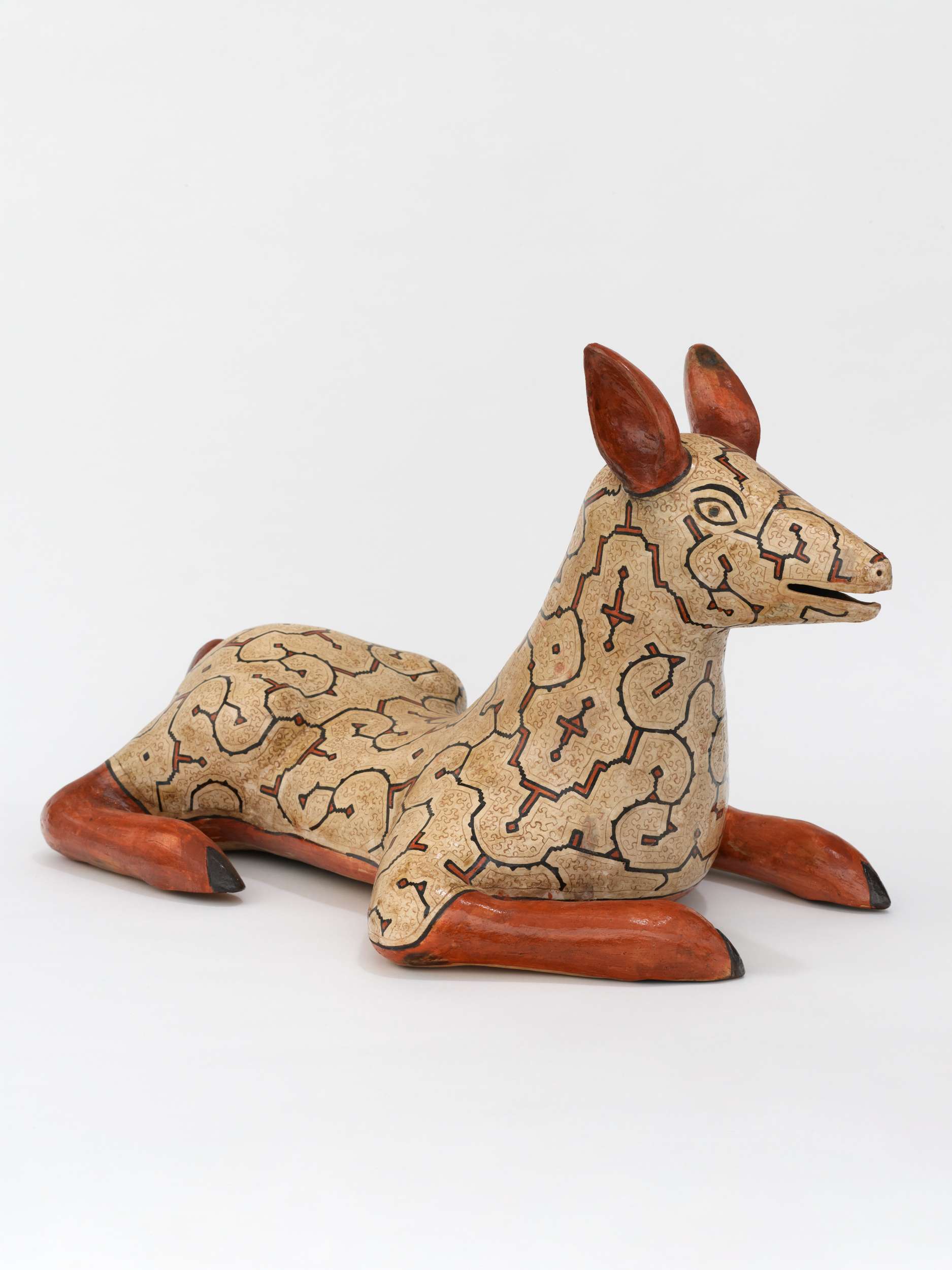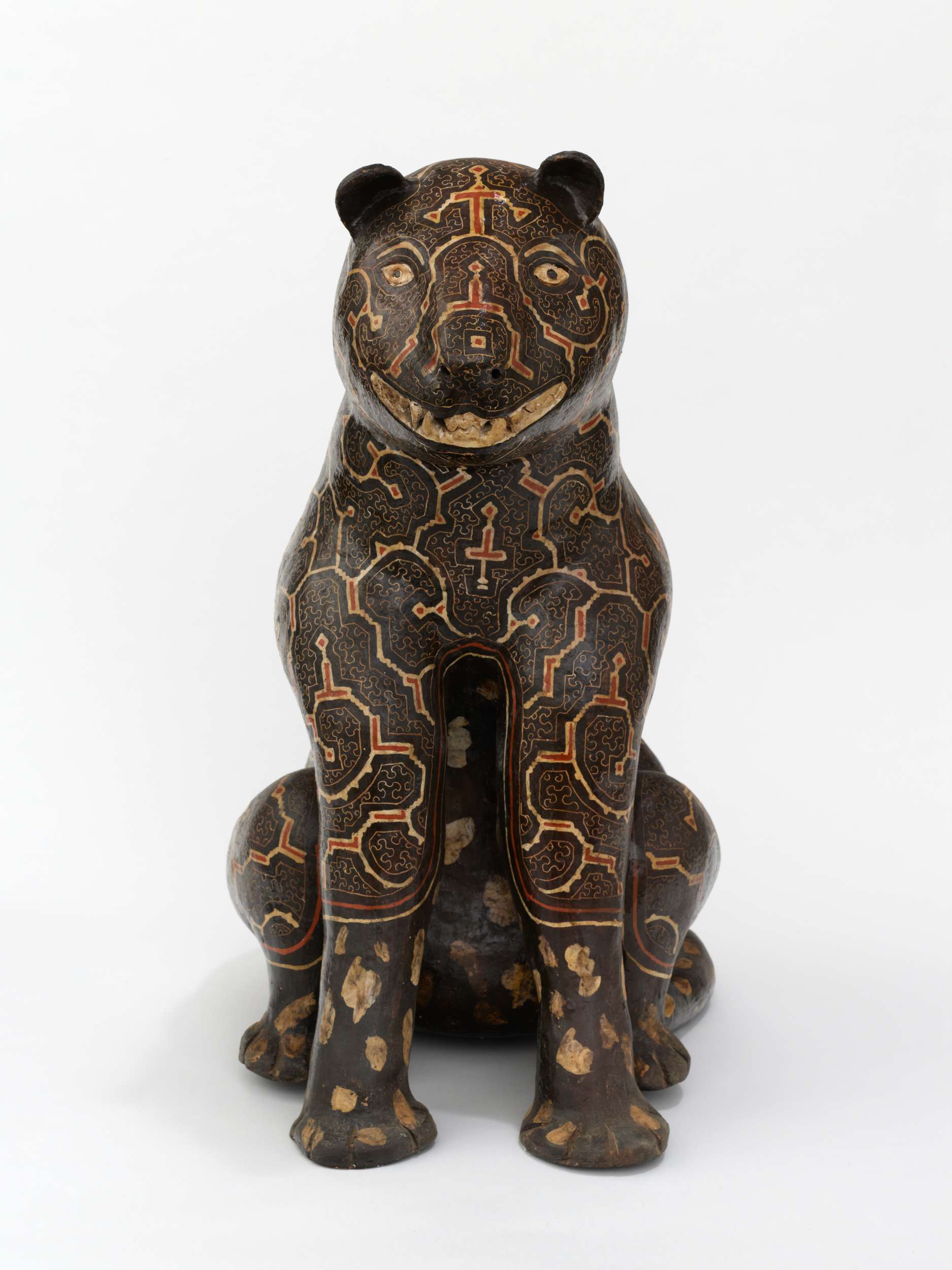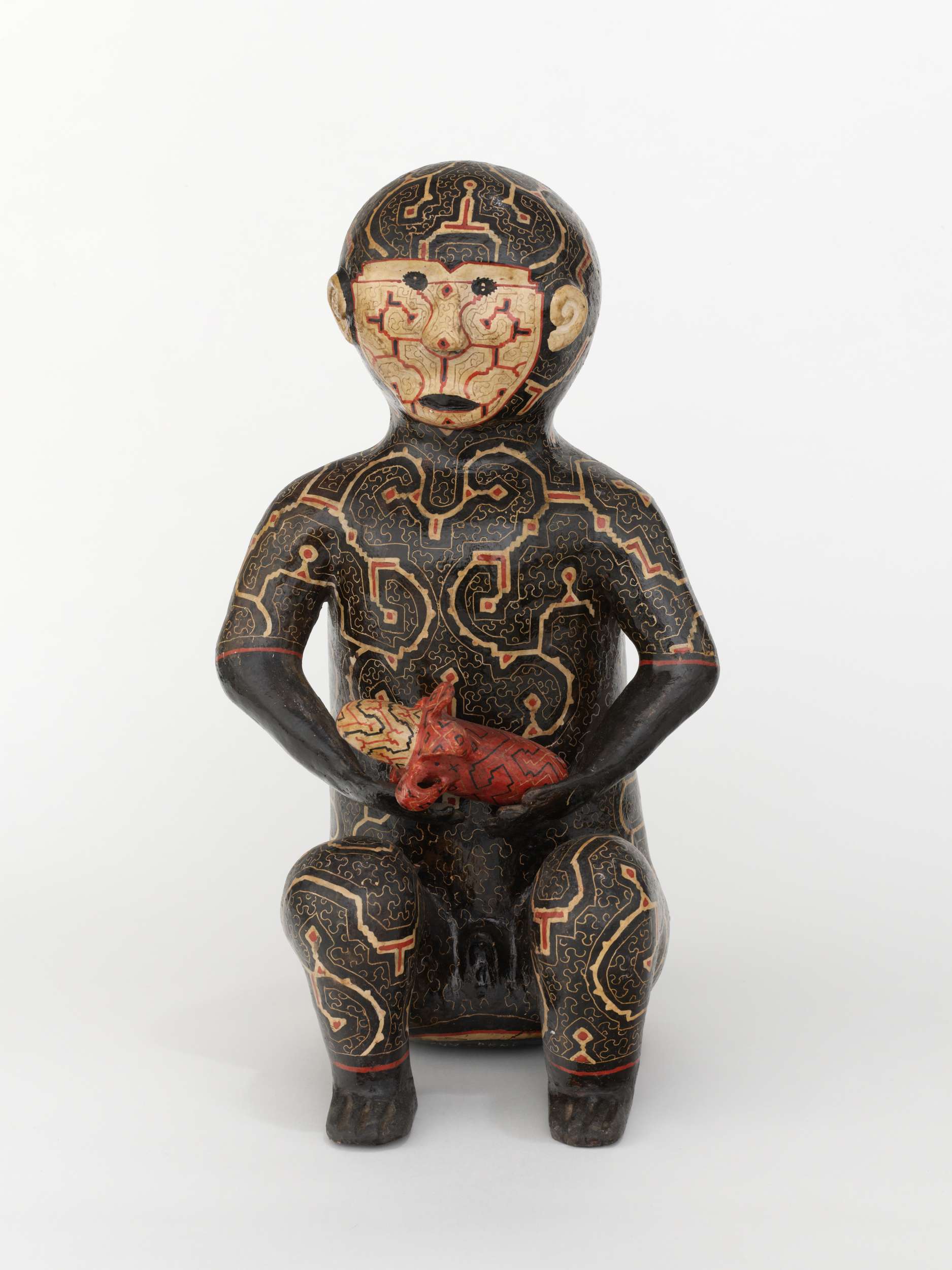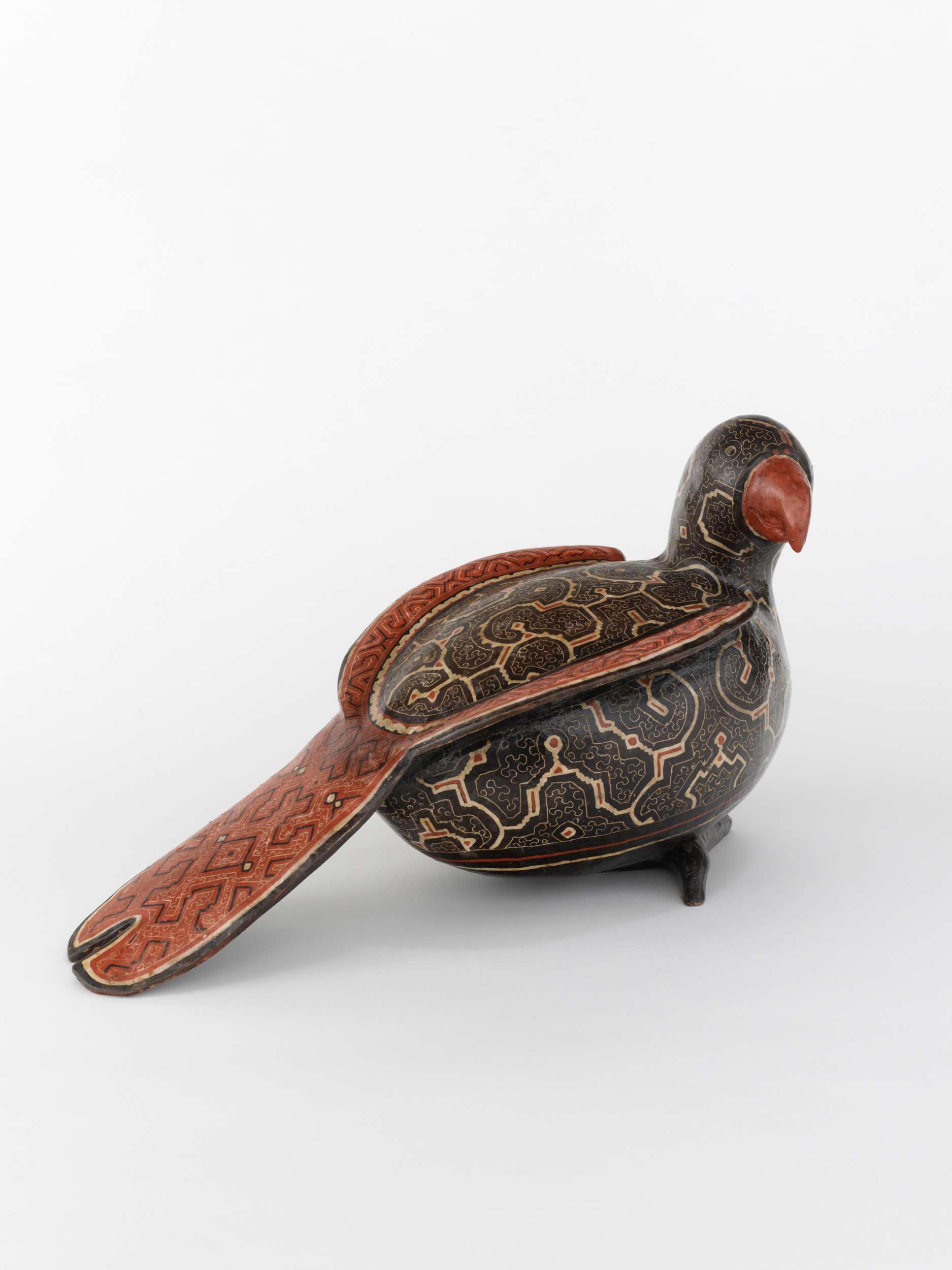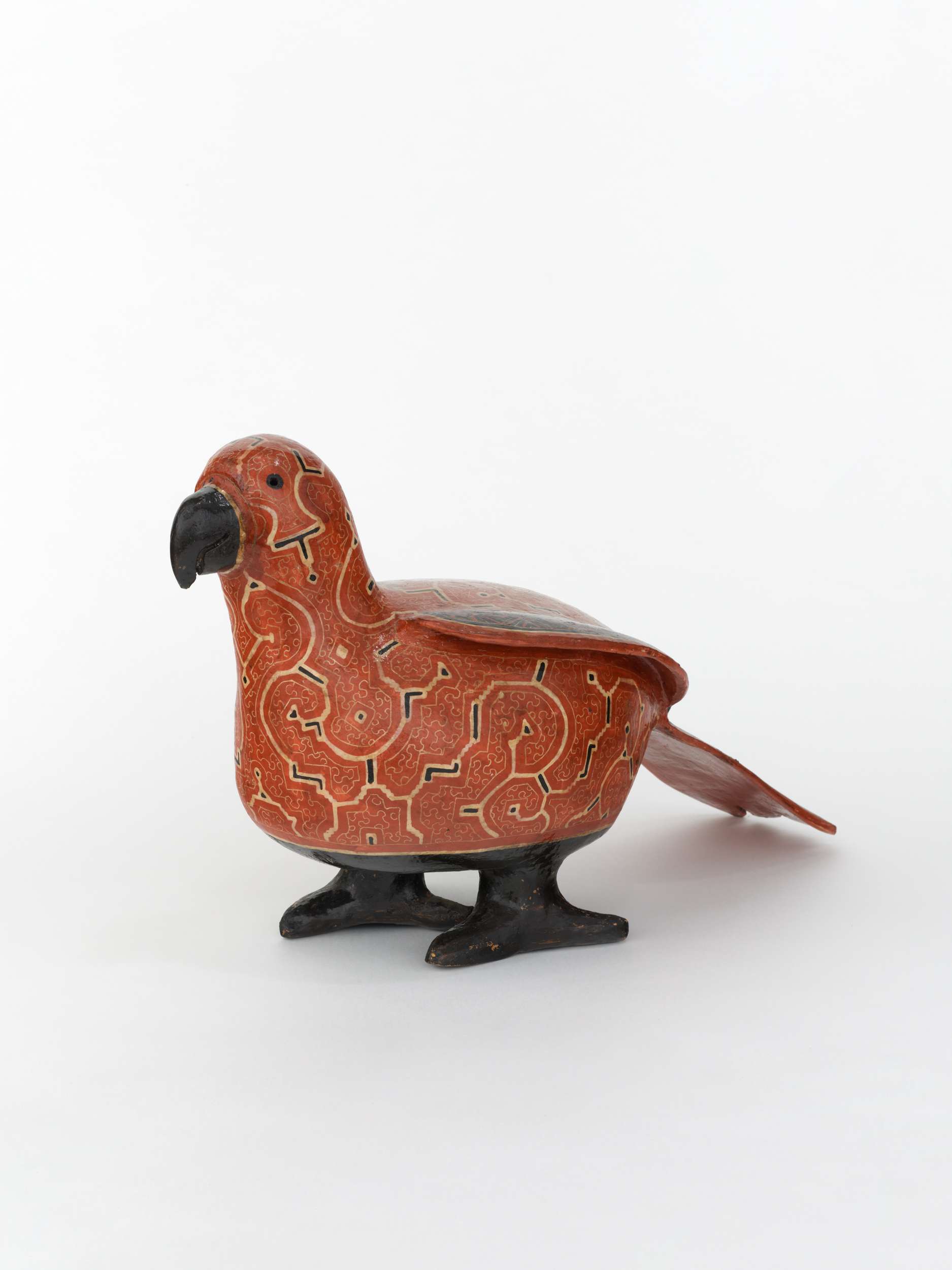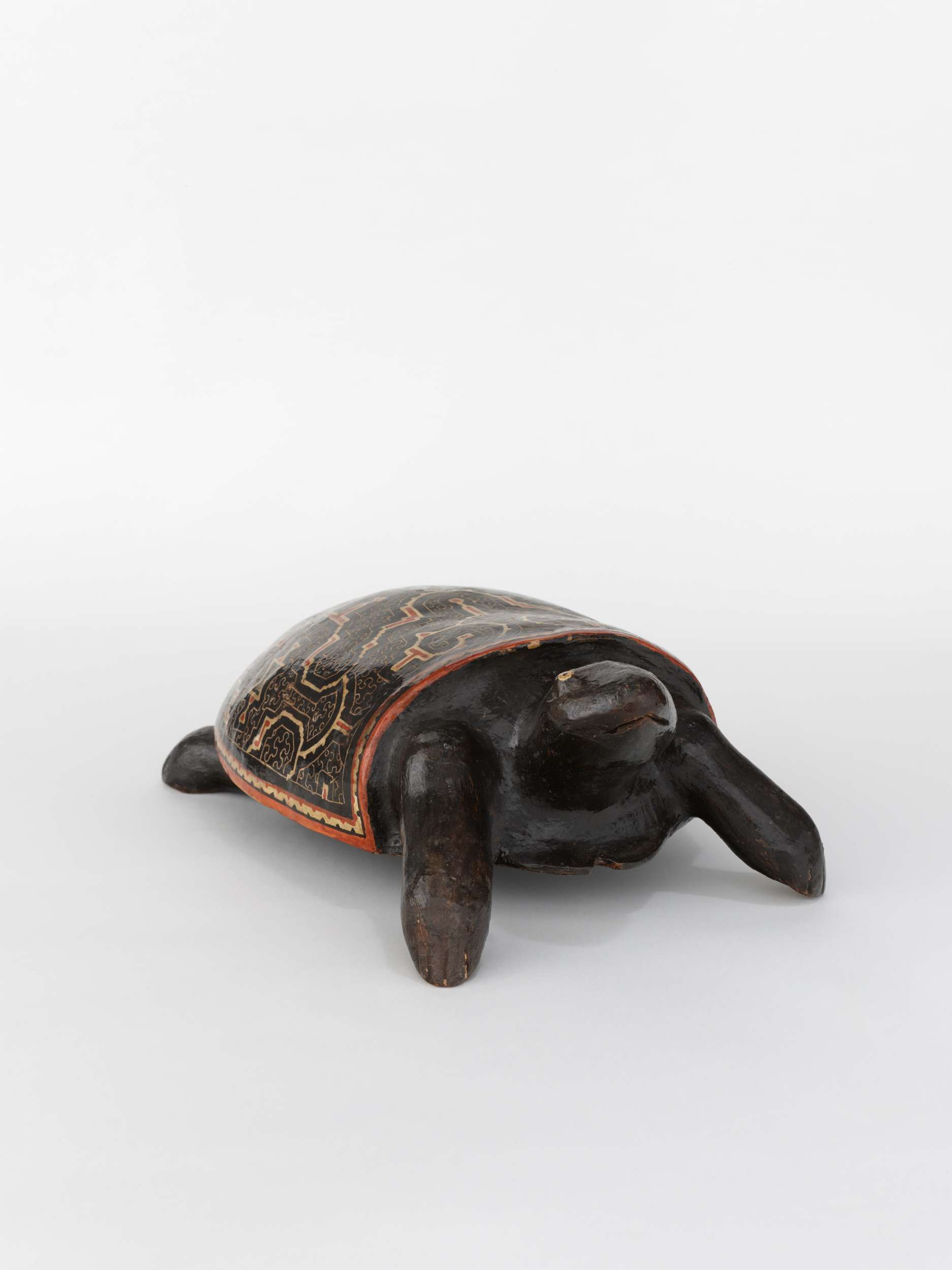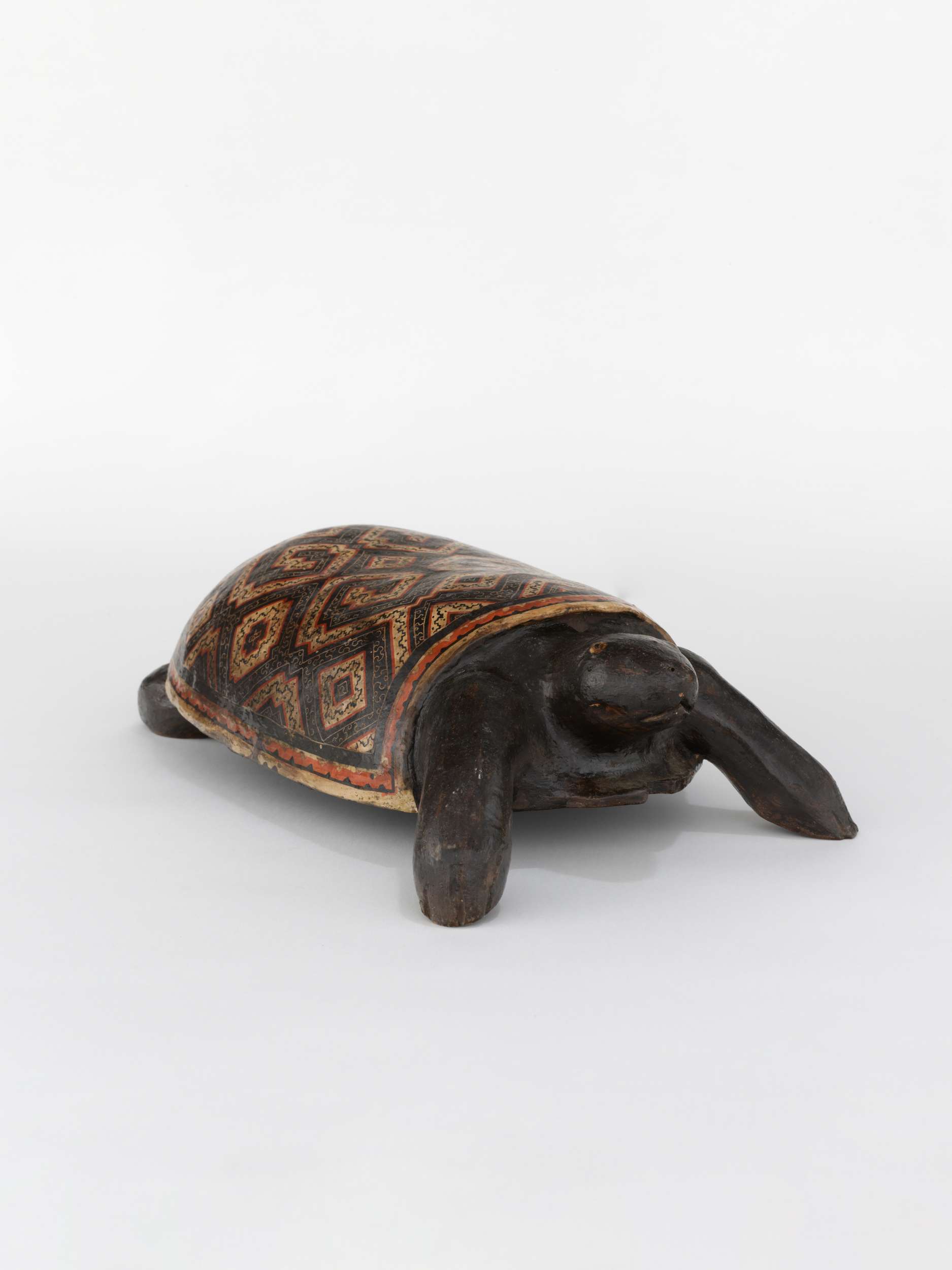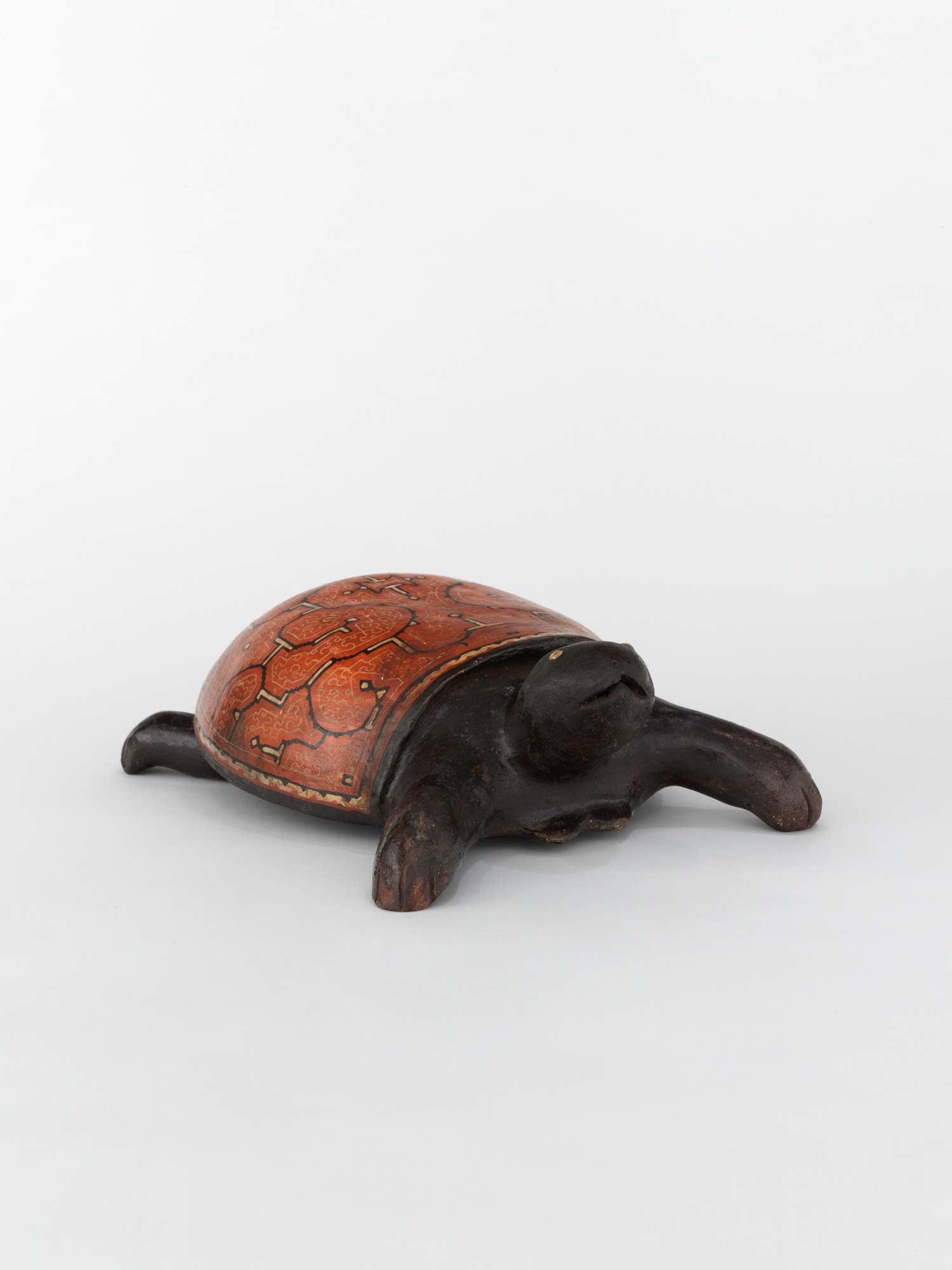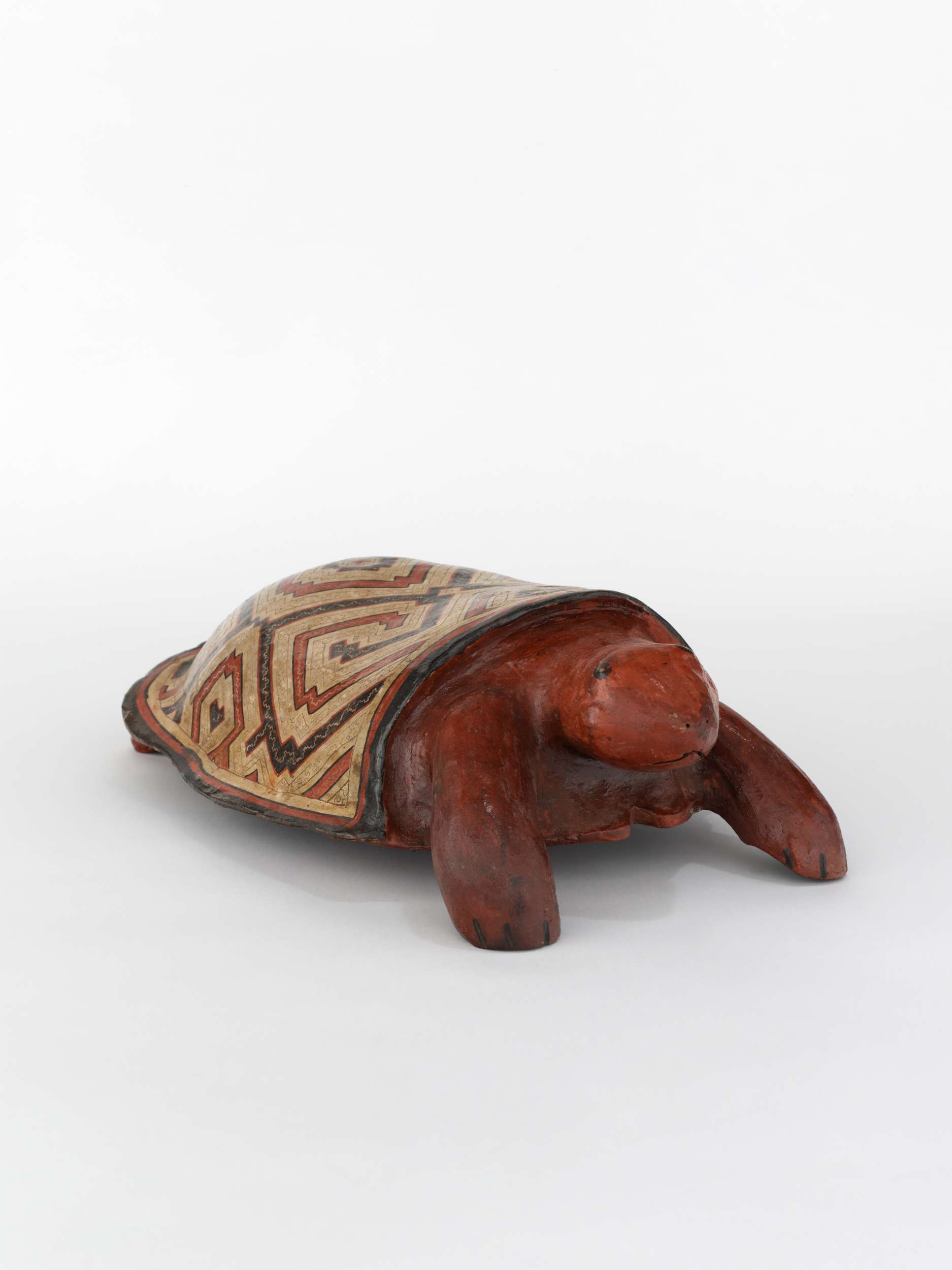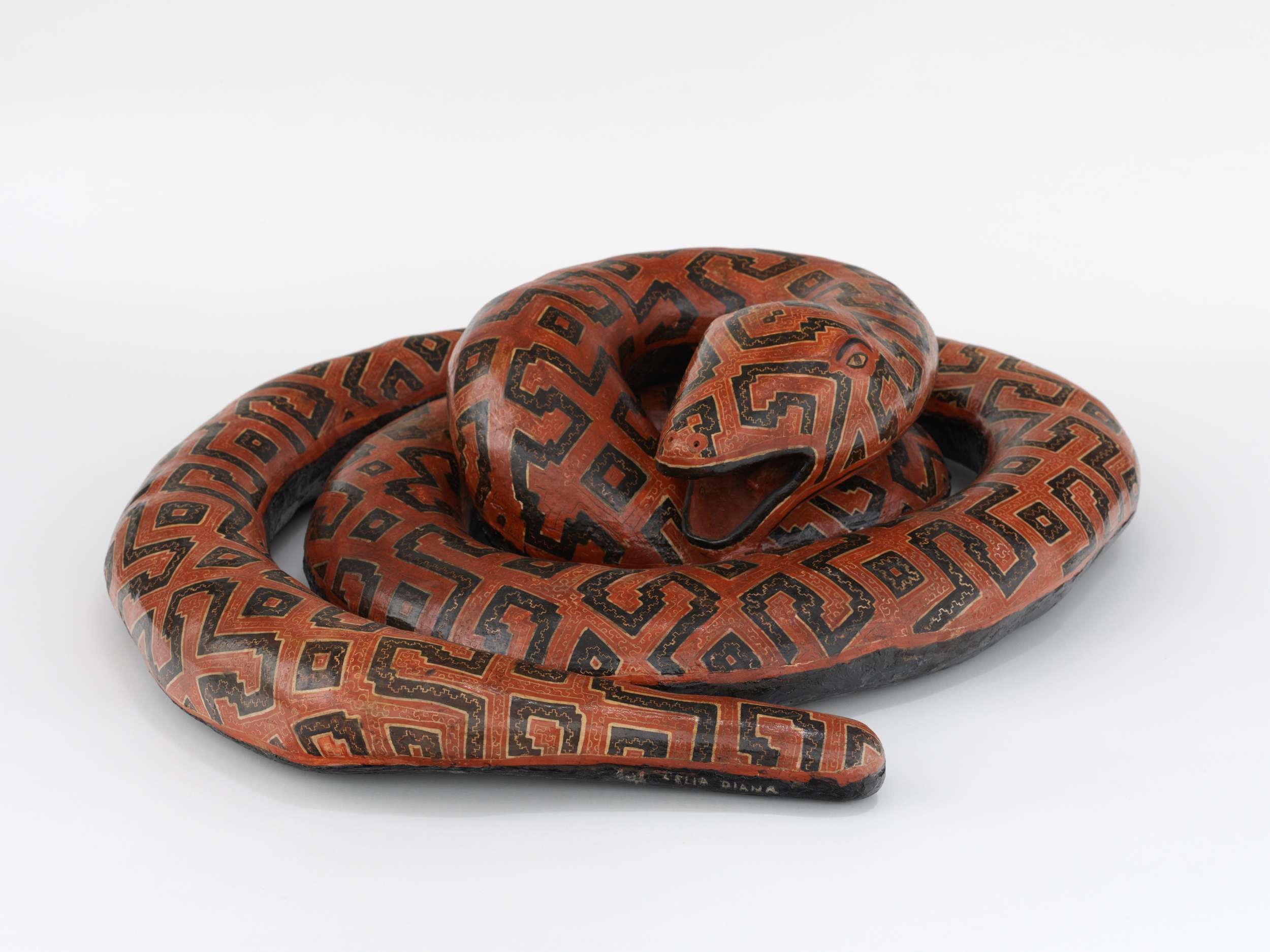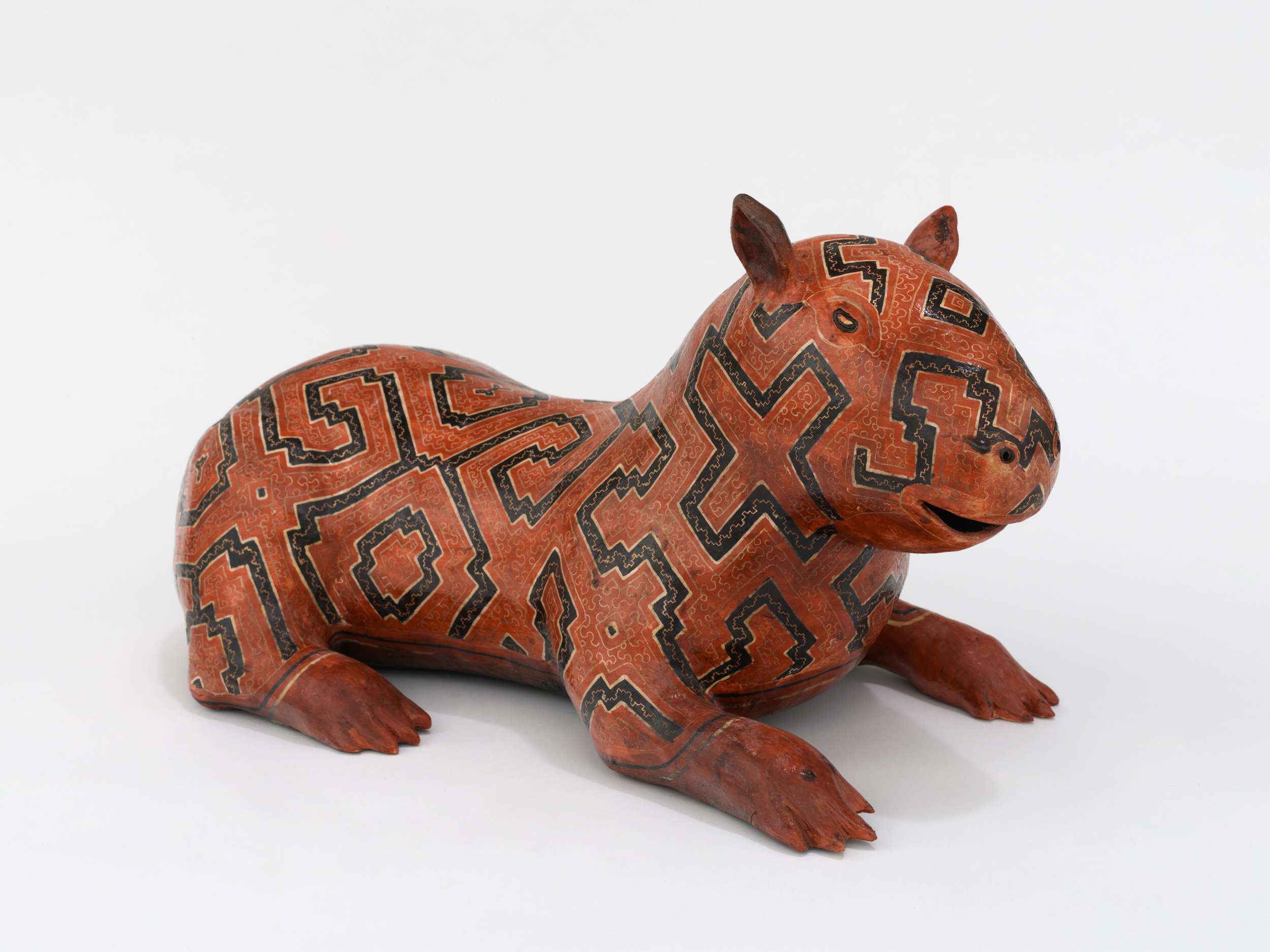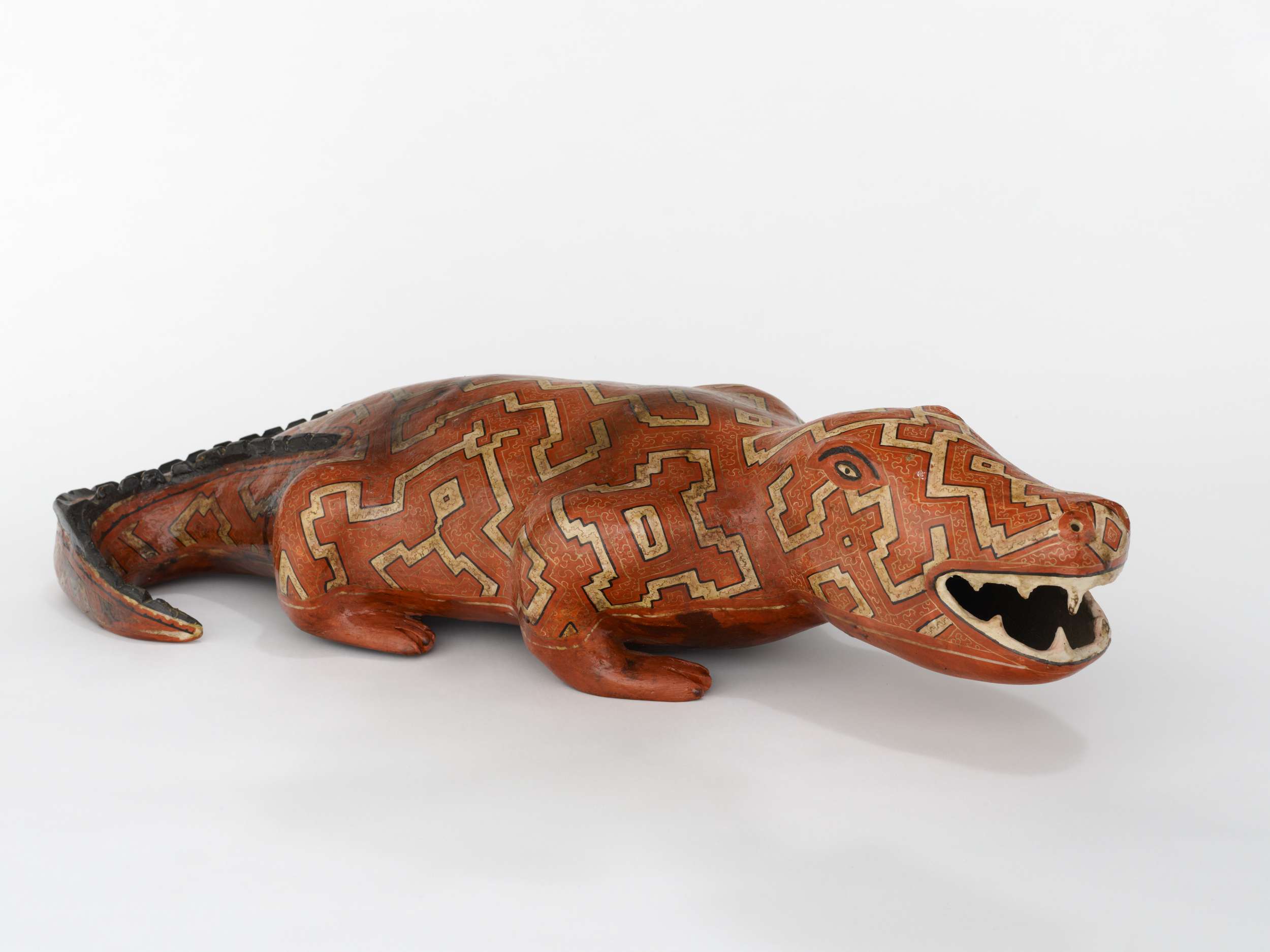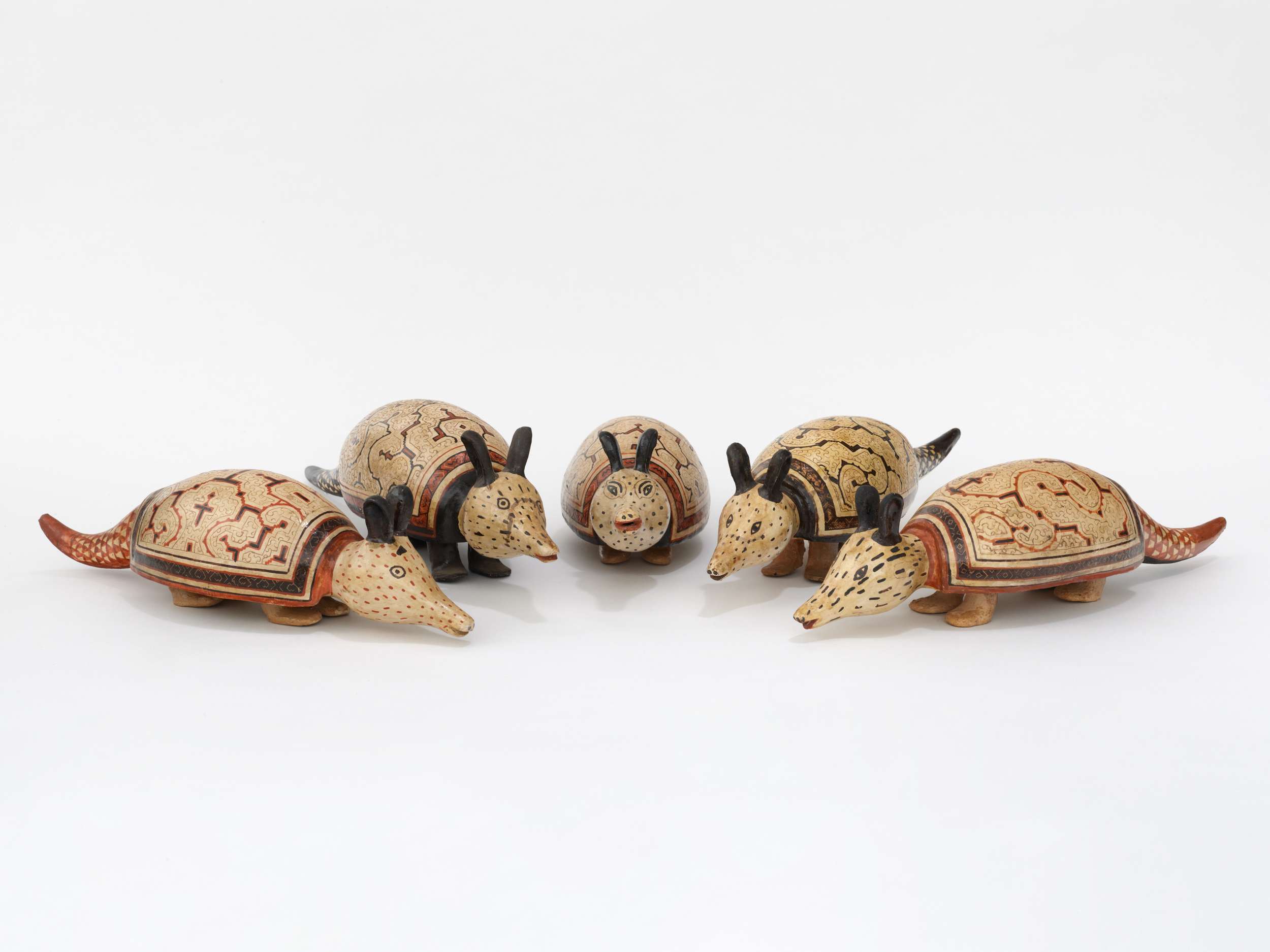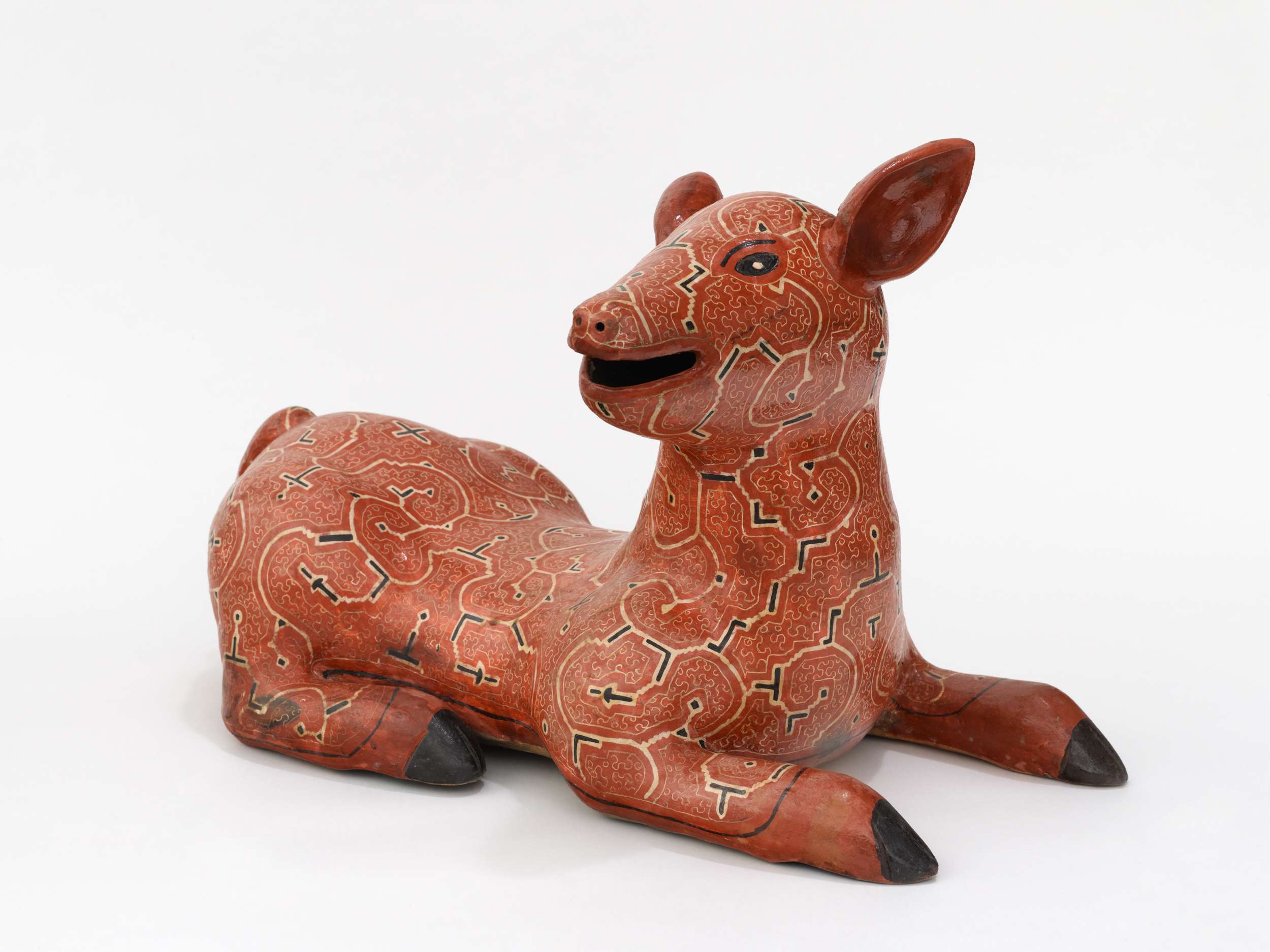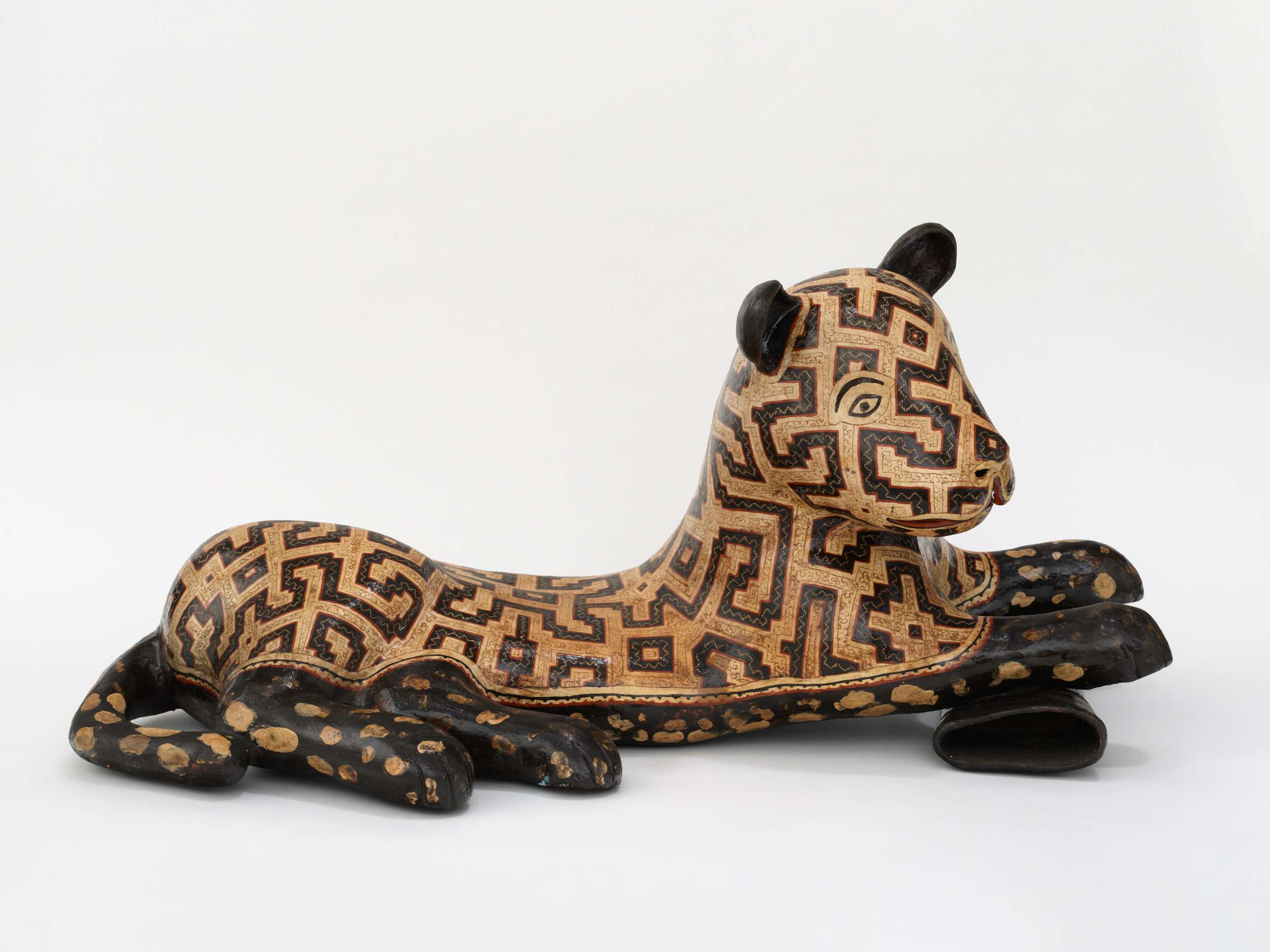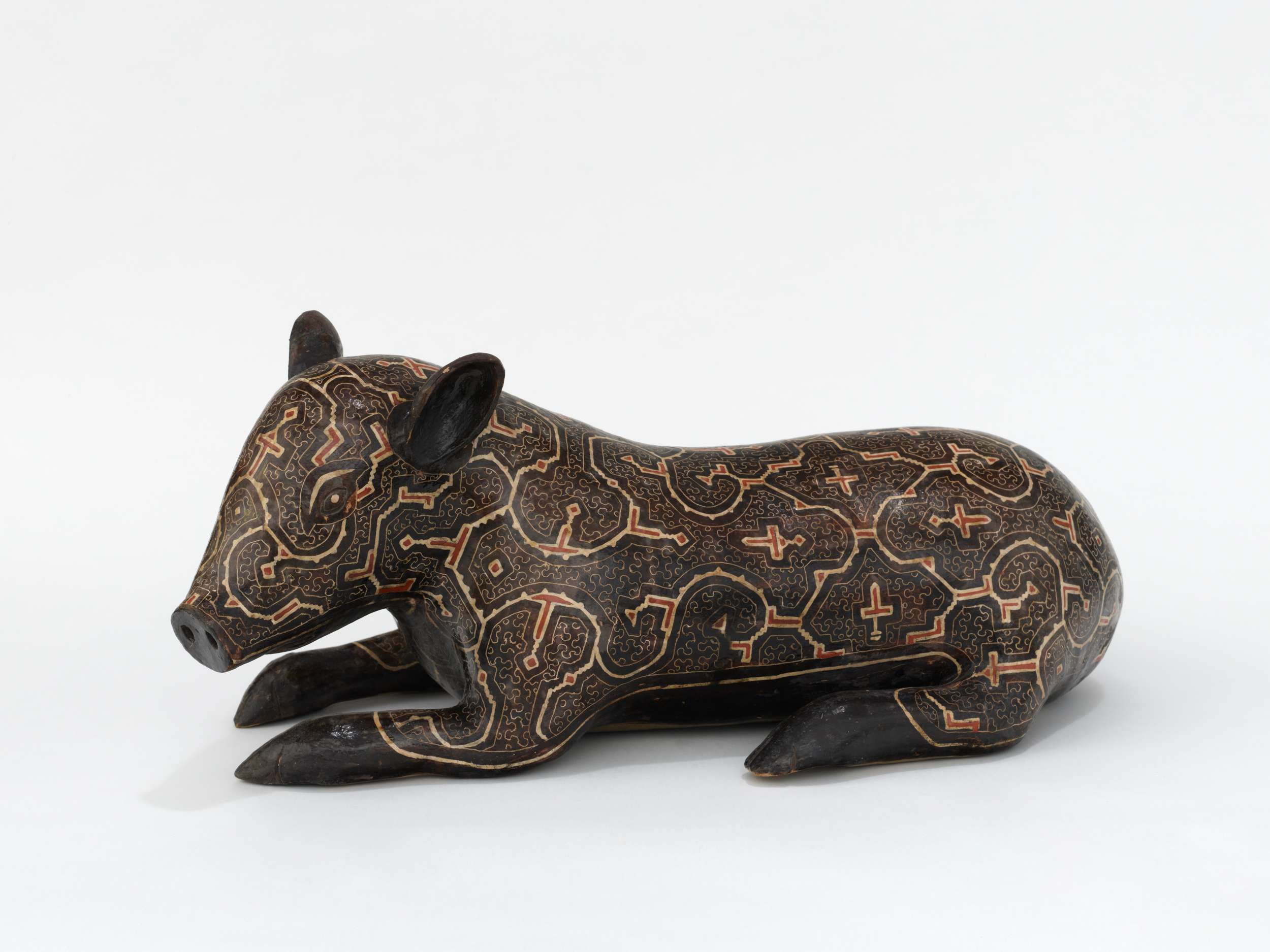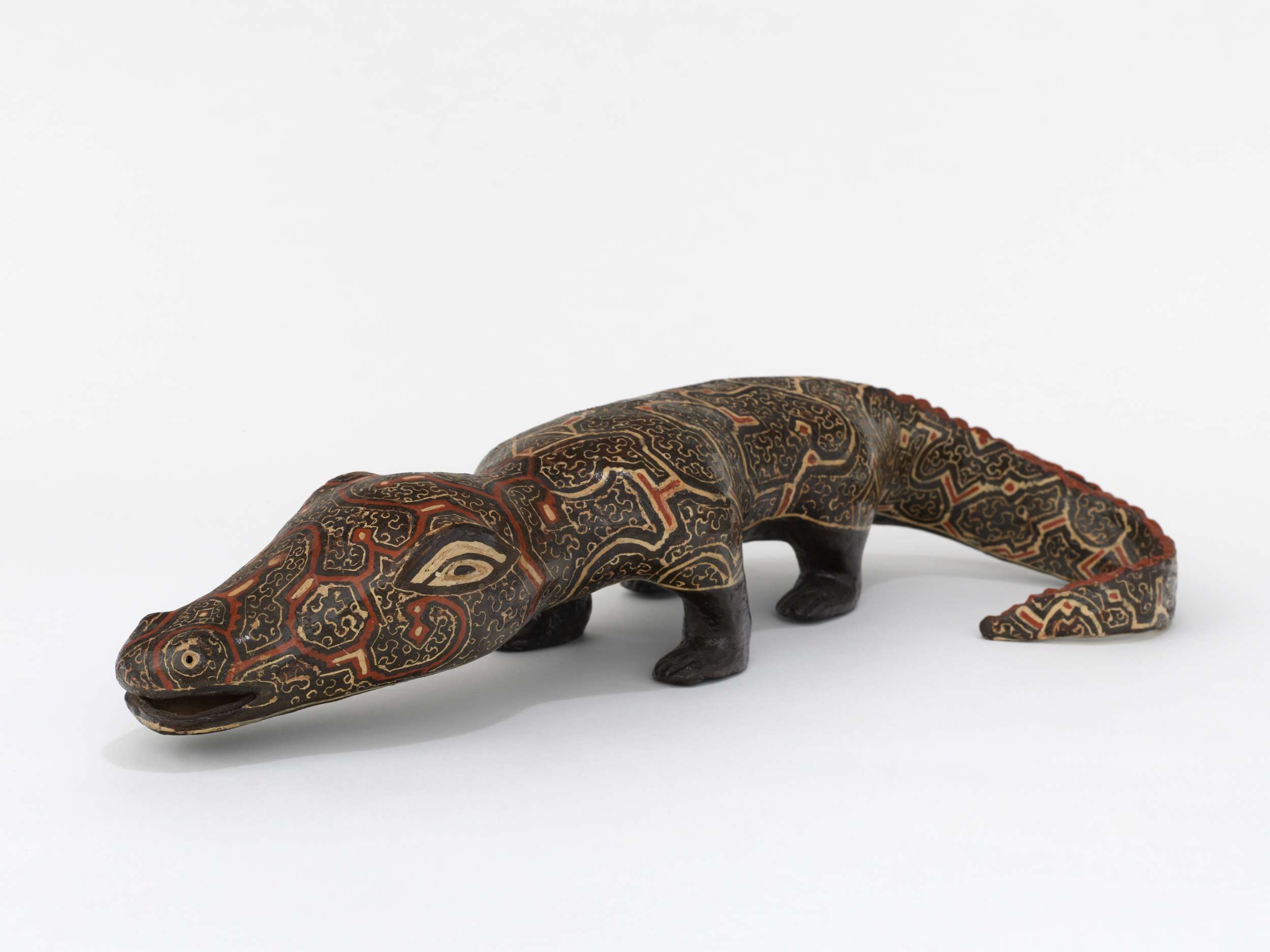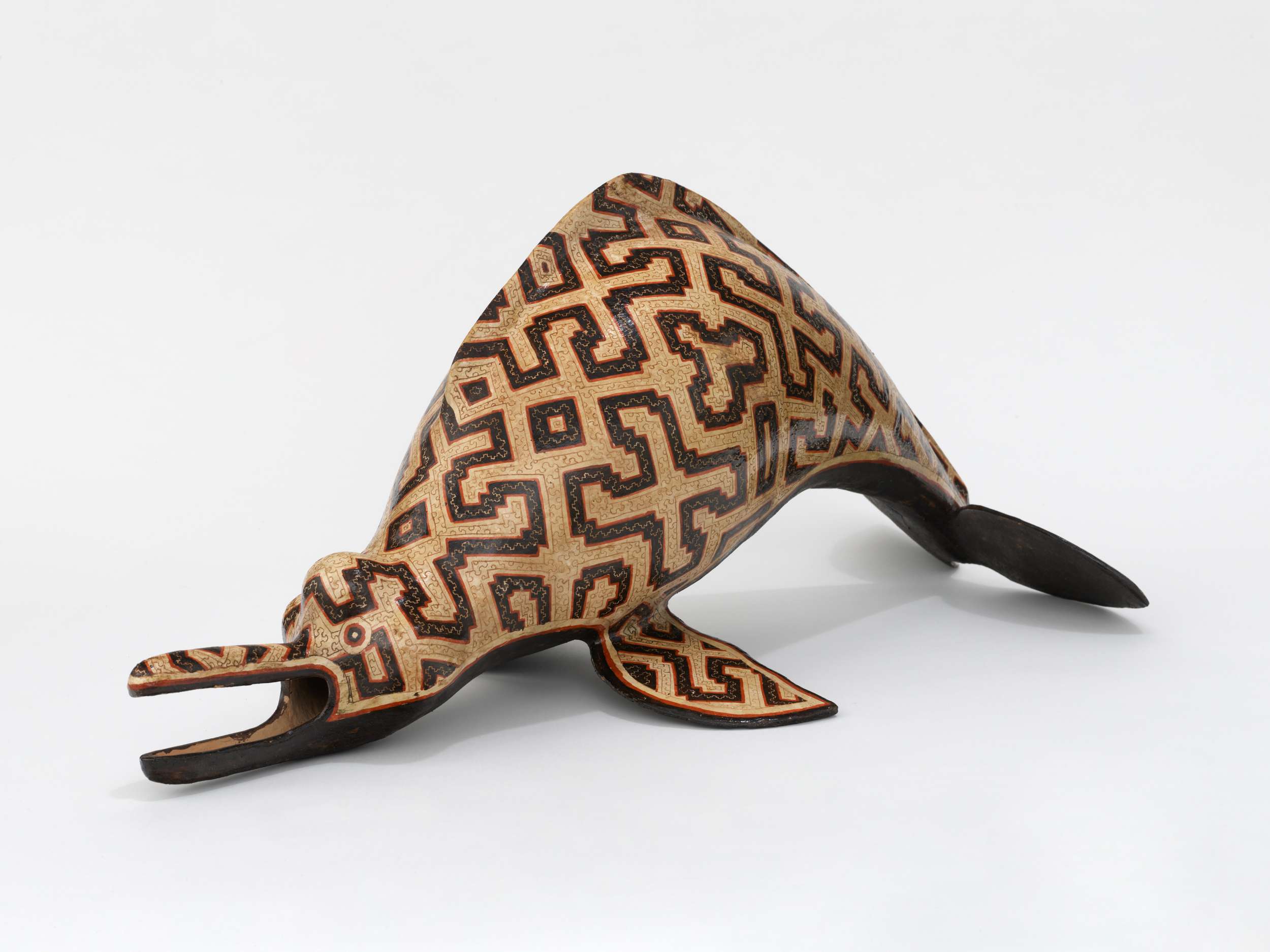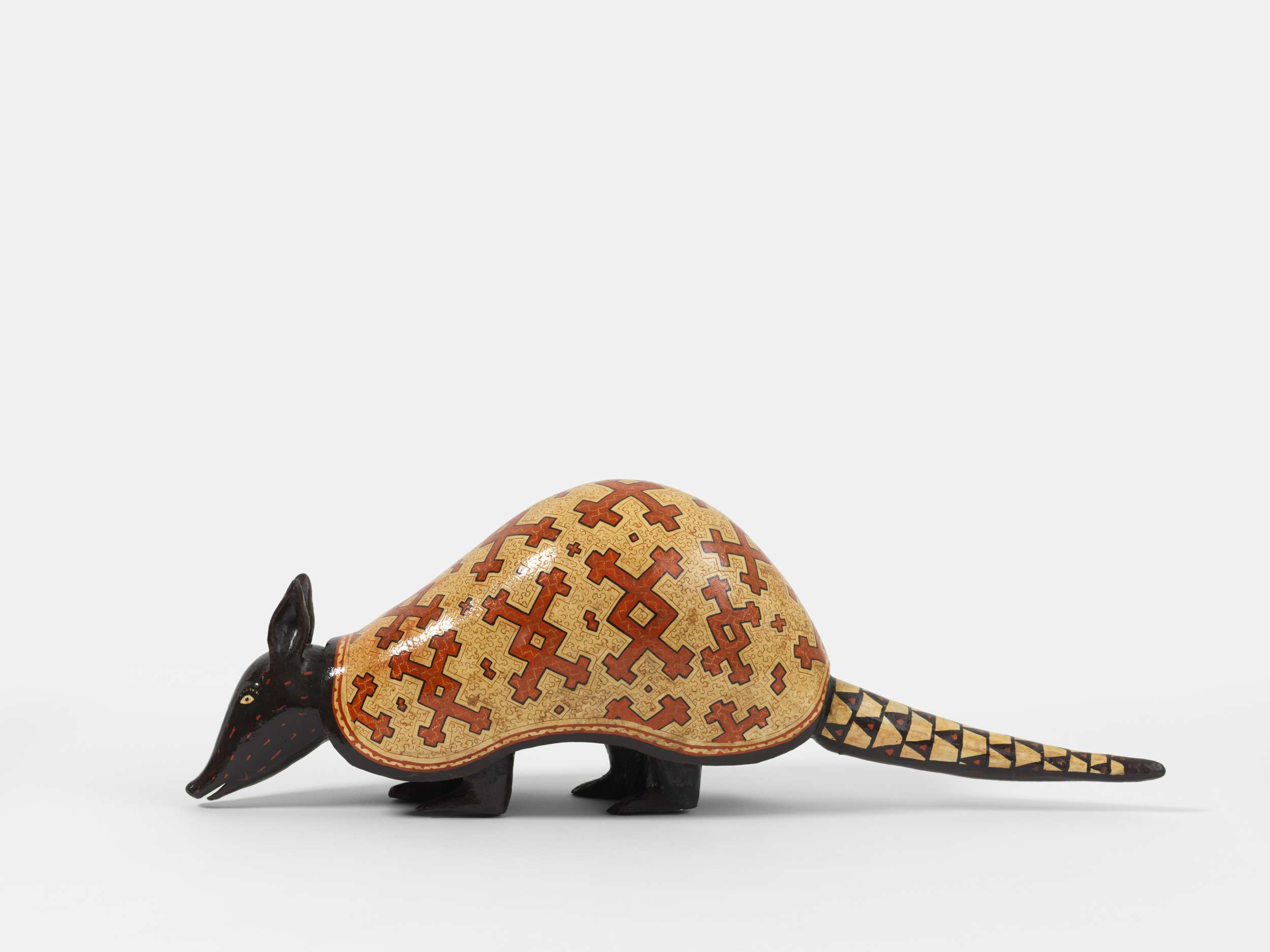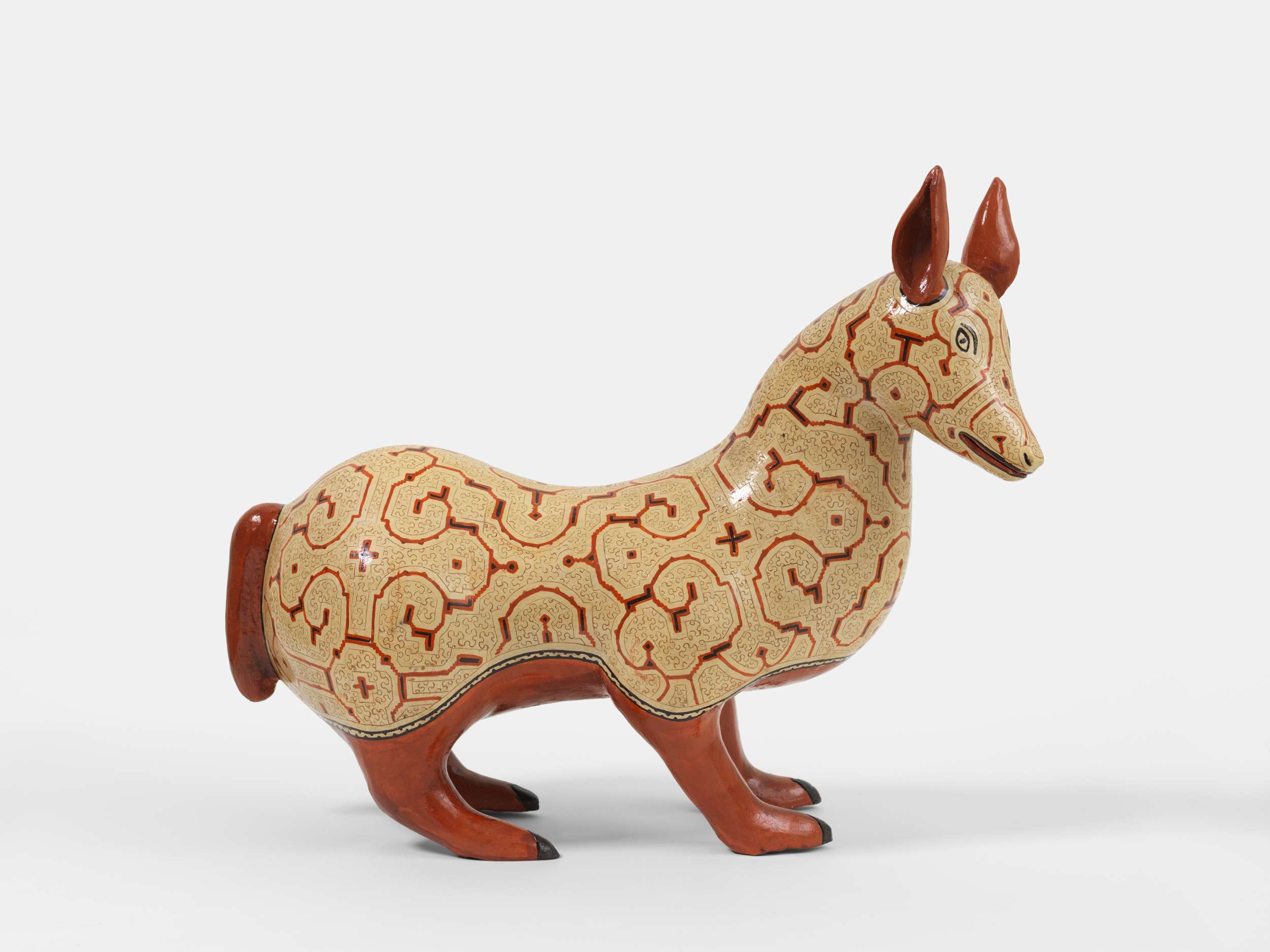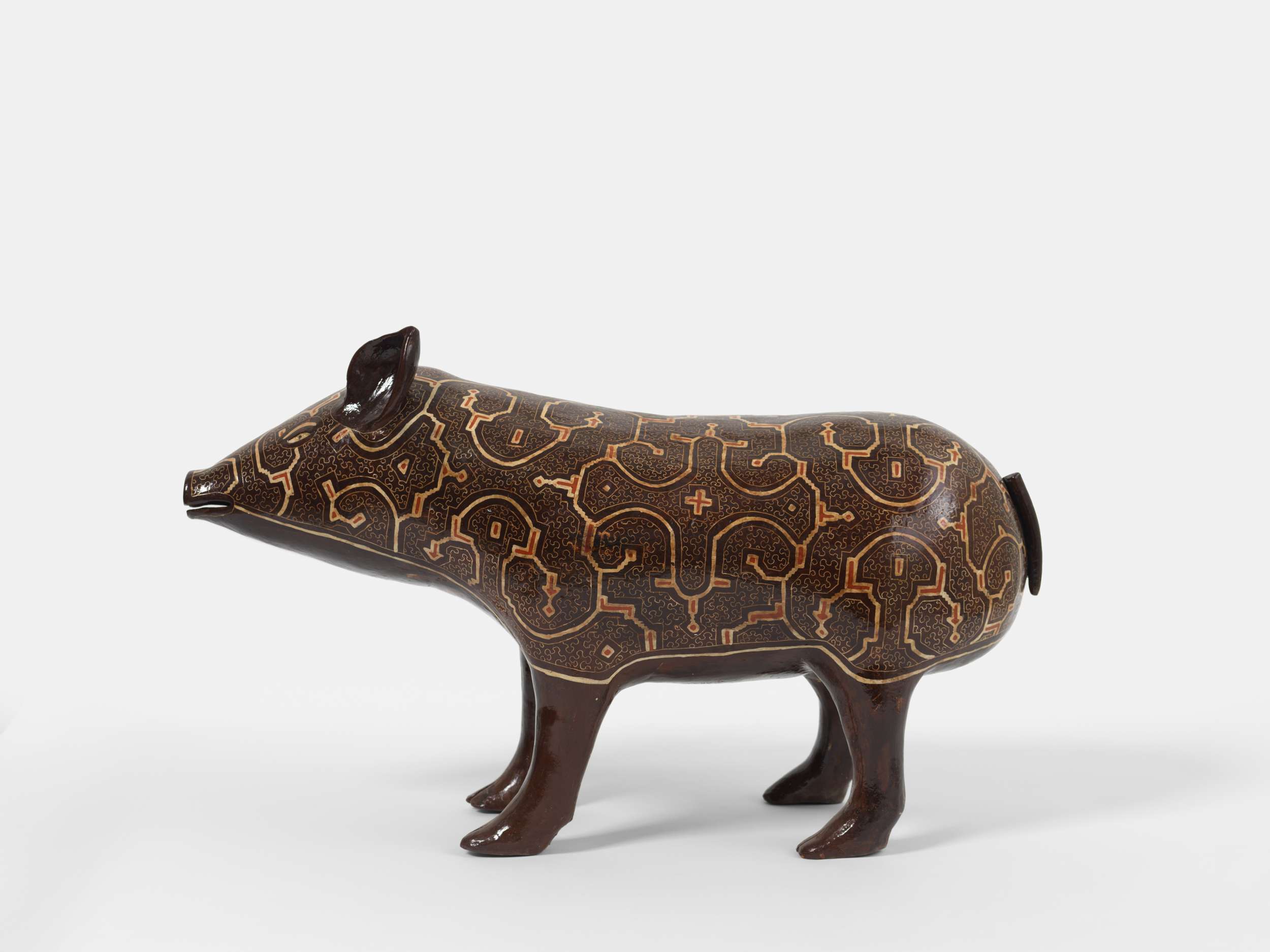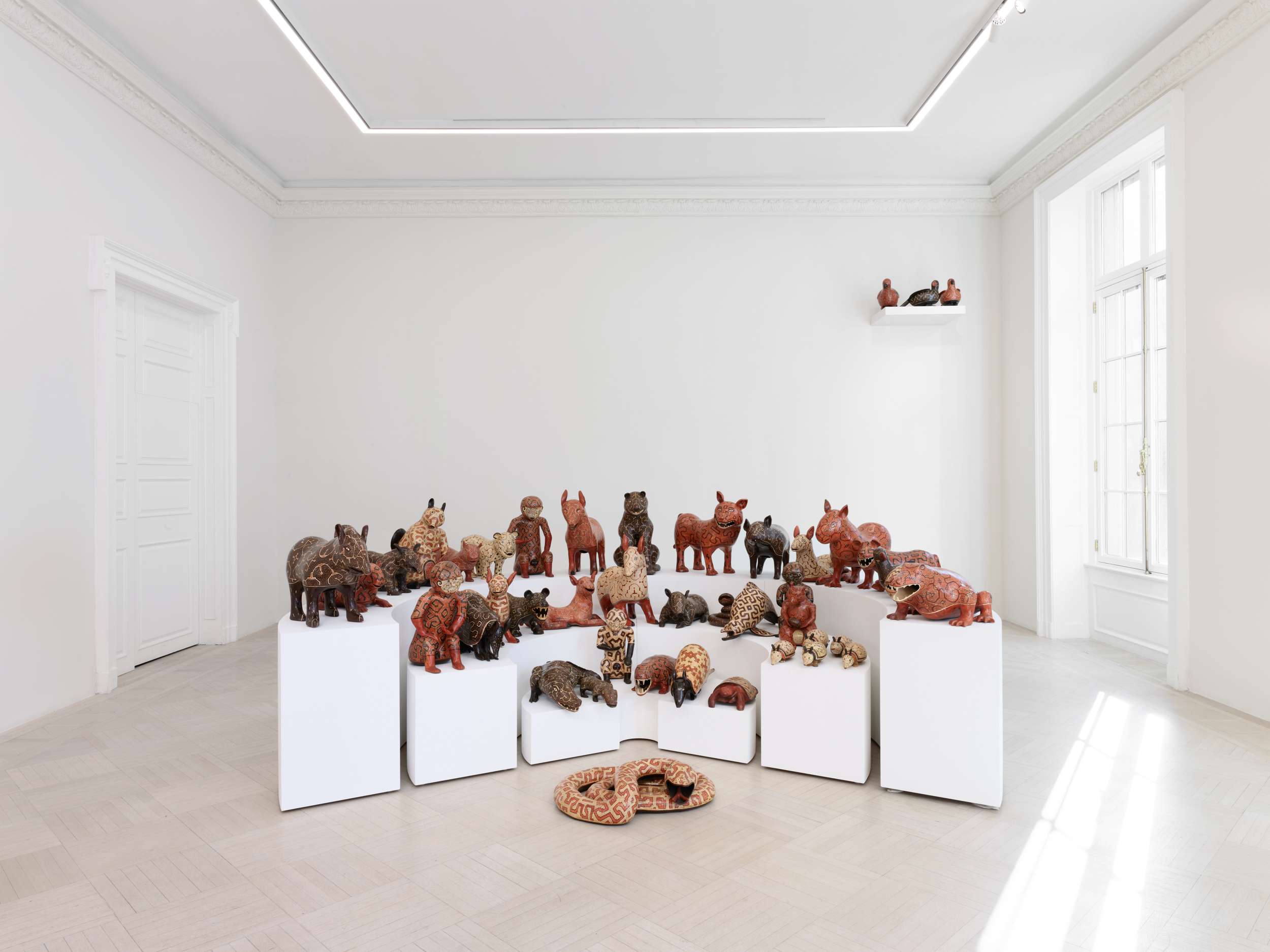
Celia Vasquez Yui The Council of the Mother Spirits of the Animals
An artistic collaboration with the Shipibo-Conibo Center
Now on View
Installation Views
Artwork
Celia Vasquez Yui creates hand-formed ceramic vessels and zoomorphic sculptures that allude to a spiritual understanding of ecology, according to which a feature of all beings includes a mother spirit. Therefore, the compilation of a bestiary is not just a compendium of endangered species or a cry against their vanishing, but rather an invocation of their spirits, a call for them to come and hold space and perhaps confront the human gaze.
For her first solo exhibition at Salon 94, Celia Vasquez Yui presents The Council of the Mother Spirits of the Animals, a large installation composed of more than fifty ceramic sculptures displayed on a platform that resembles the amphitheater of a parliamentary chamber, pointing to forms of nonhuman communication and the rights of nature.
An artistic collaboration with the Shipibo-Conibo Center, the exhibition is accompanied by a soundscape captured during a special ayahuasca ceremony conducted in the Peruvian Amazon by members of the Shipibo Union of Ancestral Healers, Asomashk. An experiment in nonlinguistic exchange that can act as a sensory interface between humans and non-humans, the healing invocations and chants were not intended to treat humans, but rather to interact with the sound-spirits of the jungle at night—birdcalls, chirps, roars, hisses, snorts, and squeaks—in an effort to focus ceremonial intention and attention on nature, itself a dying patient.
“I’m traveling on land and underwater. I’m flying over the sky and the mountains. I’m searching the riverbed to identify your sickness,” sings one of the healers in order to reach up to the celestial and the aquatic worlds, above and below, worlds within worlds. In this multiverse, human beings are embedded in and need nature. Bodies, spirits, and territories are not divorceable. Ecological malaise reflects imbalance in the spiritual sphere and manifests like illness in the material dimension.
This is the conceptual and cultural framework in which Celia Vasquez Yui’s work is conceived. The elaborate abstract lines etched on the figures—kené, as they are called in the Shipibo language—form a complex artistic genre whose almost cybernetic codified system taps into the substrate of existence, to a healing design or “design medicine,” to a musical pattern accompanying the curing song of a shaman. Certain illnesses are thought to be caused by harmful designs or energetic disorder that must be unraveled and re-imprinted with orderly ones, thus mobilizing the transformative properties of art. In other words, the visual imagination of the work is not only on the surface of the design field but performs the possibilities of a wider synaesthetic world of perception in which multiple forms of energy, sound, and bodies are entangled. As artist, then, Celia Vazquez Yui conceives and carries out her work also as “shaman,” preparing ritually for several days, much like a healer would do, by fasting, abstaining from sex and specific foods, chanting and blowing tobacco to propitiate the firing.
The manufacture of her pre-fire slip-painted earthenware requires primary ingredients, from resins, clays, mineral pigments, and tempers to the firewood for firing and the little black pebbles used to polish the surfaces that come from as far as three hundred miles away along the Ucayali River. Her artistic practice is part of a complex relationship to the ecology of the territory from which both the visions and the materials are made.
Particular qualities—both material and cultural—are attached to various clays, bringing into each artwork soils from different river basins. For instance, the grey clay adopted for the coil construction is peculiarly plastic but, in its raw form, is susceptible to shrinking and cracking during firing. Therefore, Celia Vasquez Yui carefully prepares it by mixing it with apacherama, the ashes of the bark of a specific tree containing silica, along with kenkesh, the fragments of previous pots reduced to dust. The pottery of archeological origin, having been subjected to centuries of weathering and water filtration, is more friable, and therefore preferable, as it’s easier to grind up with a mortar to make grog temper. This material acts not only technologically, but also symbolically, since both the making and breaking of the vessels become part of a cycle, intertwining past and present.
In the process of excavating potsherds, Celia Vasquez Yui is exposed to the designs and vessel forms of ancestral ware, thereby providing inspiration for her own contemporary creations. Archeologists label this kind of practice recursive acculturation. The term only partially captures what kenkesh signifies as spiritual agent and carrier of afterlife energies, truly bringing about elements of nonlinearity that defy modern concepts of art history.
So, Celia Vasquez Yui doesn’t simply make pots. Rather, her artworks are also maps of a web of connections into a far-ranging system of exchange between living and dead people, stories, animals, soils, forests, and water.
What are the spirits of the animals in Celia Vasquez Yui’s Council doing, then? With their enigmatic looks, they seem to be asking us the very same question—what are you doing?—as the drive for indiscriminate economic growth brings the planet to the brink of environmental and social catastrophe.
About the collaboration with the Shipibo-Conibo Center.
If the order of kené designs can be understood as a visual manifesto of the commitment to the core values of Shipibo ethics, and to protocols of conviviality, reciprocity, and kinship that extends beyond the human to animal, plant, land, and water, it is within these principles that the artistic collaboration between Celia Vasquez Yui and the Shipibo-Conibo Center is rooted.
This implies an understanding that the work of art, the work of environmental activism, and the struggle towards Indigenous sovereignty cannot be separated; they must move forward on the same path.
The Shipibo-Conibo Center collaborations are part of an effort intended to overstep the colonial paradigms that have separated Indigenous artists from the contemporary art setting. These partnerships aim to set up a model of how to possibly rejoin the realms of art, healing, ecology, and politics that were separated through colonial and neocolonial modes of extraction and representation.
Celia Vasquez Yui
Celia Vasquez Yui is an artist, Indigenous rights activist, and political representative of the Shipibo-Conibo People of Peru. Born in the Amazonian city of Pucallpa in 1960, she began creating alongside her mother, an eminent ceramicist and descendant of the polychrome horizon cultures, whose archeological record throughout the Amazon dates back thousands of years. Balancing a cultural imperative for inventiveness with the constraints of traditional style, Celia Vasquez Yui has distinguished her practice through astonishing creative innovations, exploring and expanding the zoomorphic features of the style. Not only does Celia Vasquez Yui often work alongside her daughter Diana Ruiz Vasquez—an intergenerational collaboration that adds another expansive dimension to the work through which two bodies and two minds merge to finish each other’s designs—but she also has the custom to cut off a lock of hair from the head of her youngest apprentice in order to make from scratch the paintbrushes of different sizes she uses to paint the designs. This way, her kené pathways channel into a pledge for the future too.
In 2007 Celia Vasquez Yui was elected President of the Professional Association of Sculptors of the Ucayali region of Peru. Her work has been included in early important exhibitions of Amazonian art and recent contemporary art exhibitions both in Peru and internationally.
Selected Exhibitions:
2020 The Hummingbird Paints Fragrant Songs: Sara Flores and Celia Vasquez Yui, curated by Brett
Littman and the Shipibo-Conibo Center, Outsider Art Fair Curated Projects, New York, NY.
2014 Art-Medicine, curated by Leonor Caraballo and Matteo Norzi, Conibo Productions, New York, NY.
2011 Art-Medicine, curated by Leonor Caraballo and Matteo Norzi, Conibo Productions, New York, NY.
2004 Inti Raymi, Inca Sunrise Festival, Cusco, Peru.
2003 Concurso Regional de Cerámica (National Award of Ceramic), 1st prize, Lima, Peru.
1998 Saint Louis Art Fair, curated by Rebekah Joy Plett, St Louis, MO.
About Asomashk
The Union of Shipibo Healers Asomashk was formed to take stand against spiritual extractivism, given the enormous foreign interest in Amazonian plant medicine.
Its mission is to call for a politically conscious and anti-colonialist set of practices that take into account power differentials, economic inequality and the social reality of Shipibo communities.
About the Shipibo-Conibo Center
This exhibition is a collaboration with the Shipibo-Conibo Center (http://www.shipiboconibo.org), New York. The Center is an art project in the form of a nonprofit organization that works alongside Indigenous leadership in the Amazon toward Shipibo self-determination and territorial sovereignty in a sustainable future.
For information about the exhibition, please contact Alissa Friedman at alissa@salon94.com.
For press inquiries, please contact Michelle Than at michelle@companyagenda.com
Press
The New Yorker
Mold
The Art Newspaper
